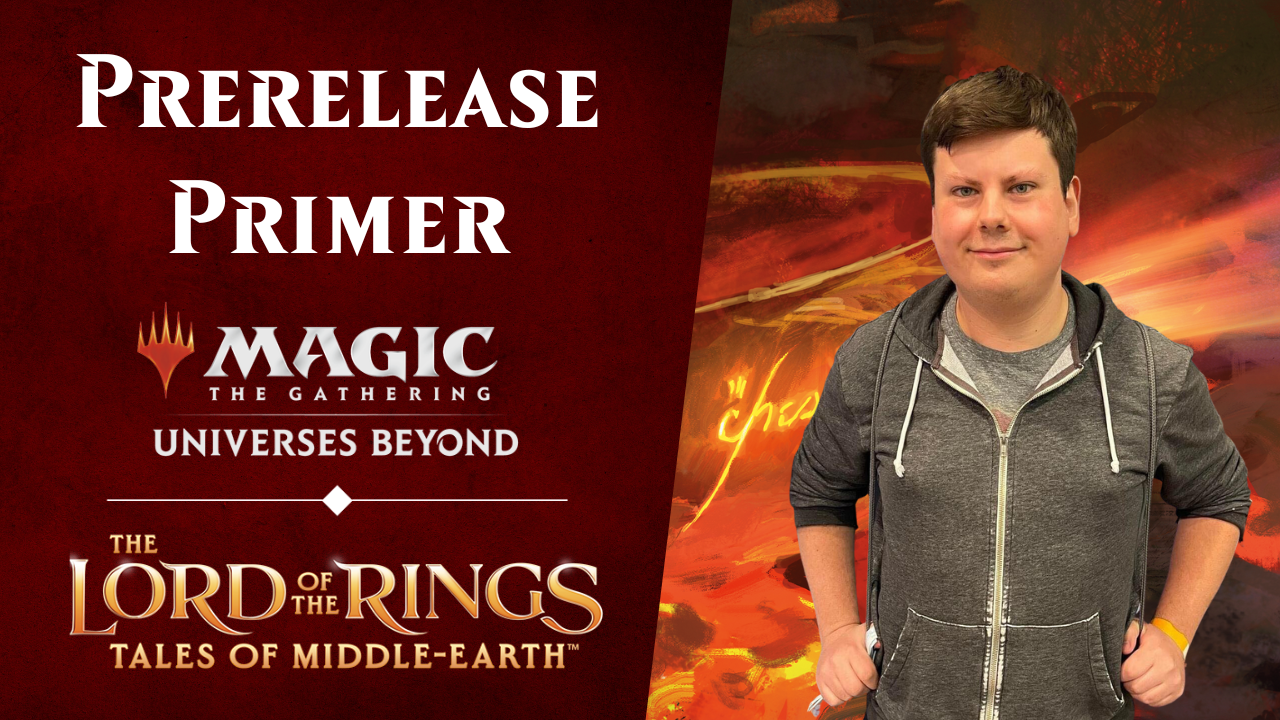“And now, something is about to happen that hasn’t happened for an age… ‘Tis a gathering…” – Treebeard
The Lord of the Rings is hands down one of, if not my favorite fantasy IPs. I fell in love with the movies as a kid and read through the books growing up. I’m incredibly excited to be a guest at Commandfest Anaheim this weekend, where I’ll be battling in multiple LotR prereleases. With every new Magic set comes a new Roman prerelease primer for you all to check out, so without further ado lets venture into Tales of Middle Earth!
New Mechanics
The Ring Tempts You
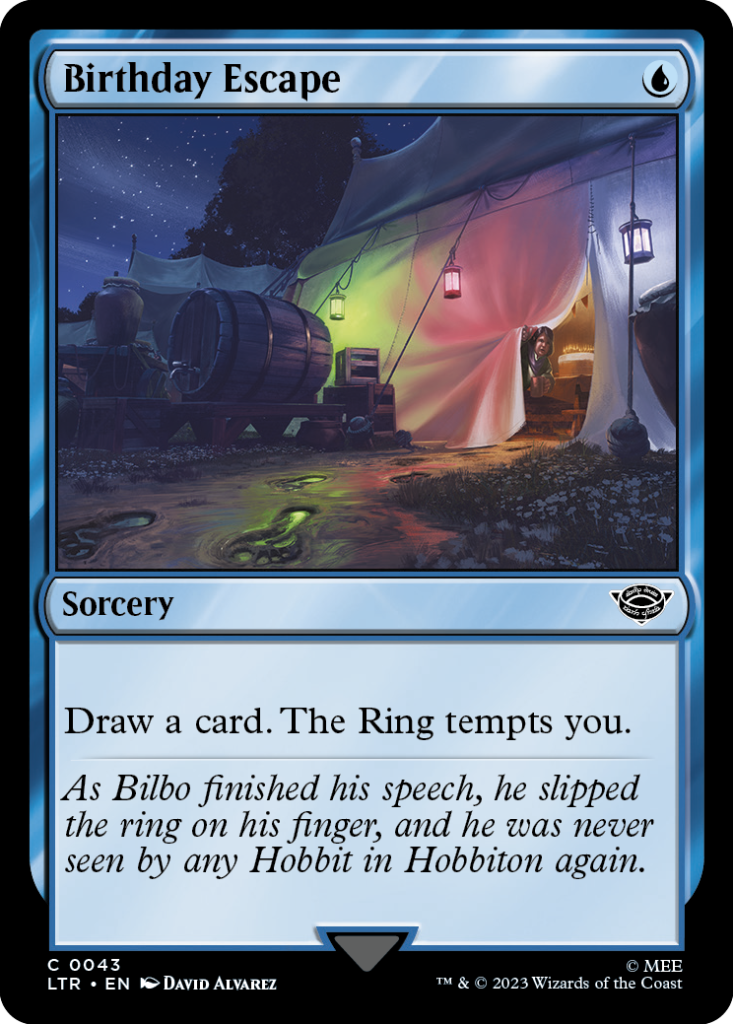
The Ring is a new emblem similar to the dungeon mechanic from Adventures in the Forgotten Realms.
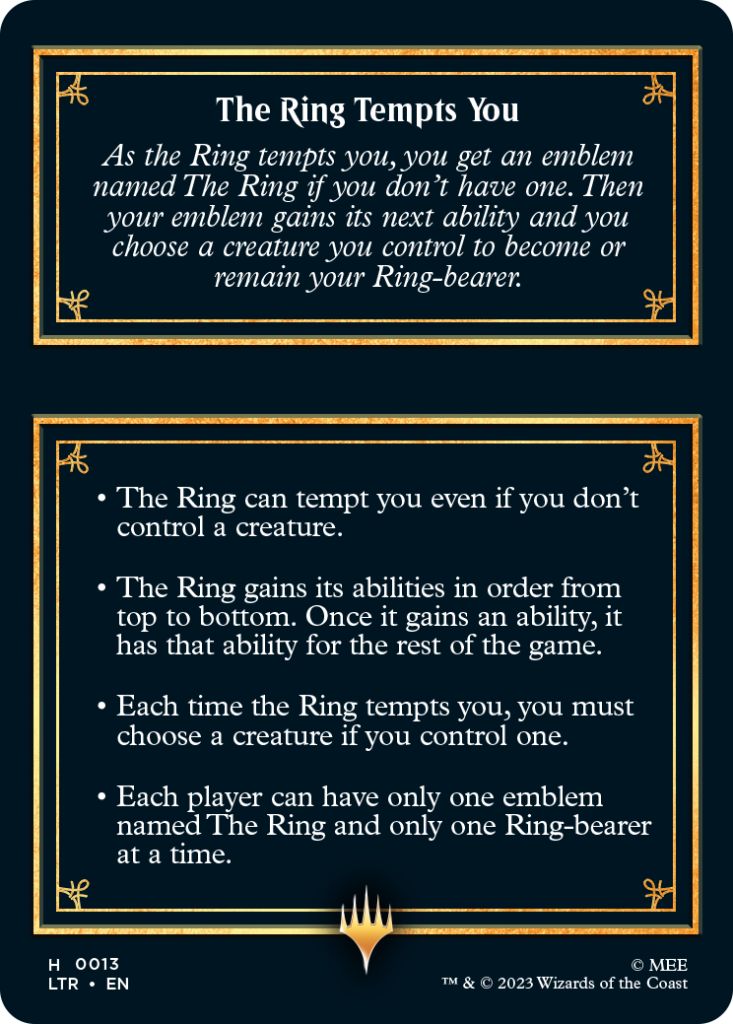
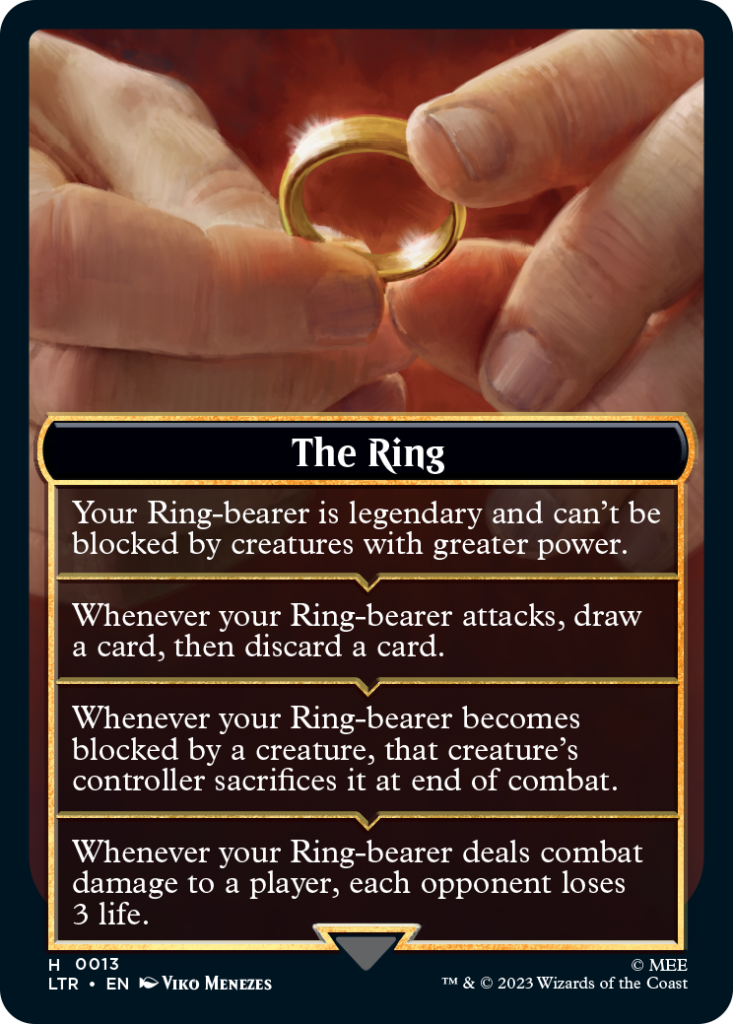
As explained in this fancy helper card, every time The Ring temps you, you choose a creature you control to be your ring bearer (you can choose a new bearer every time you’re tempted). Then, you gain the next ability of the emblem. This is a mechanic that I believe is very powerful in Limited based on its initial design. Emblem mechanics like dungeons or Monarch are great way of providing outside resources for you to pull ahead of your opponents in games of Limited, where your resources are, well, limited to begin with. The Ring is a powerful way to get through an attacker and some incremental advantages over the course of a game. On average you’ll want to target your 1-power creatures since they’ll be less likely to die in combat since creatures with greater power cannot block them.
Amass Orcs
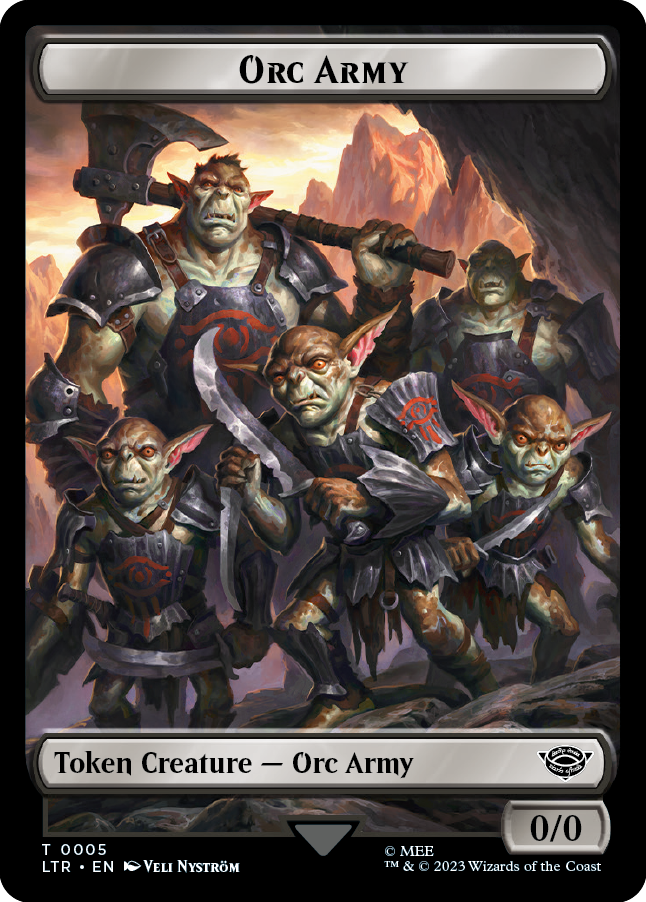
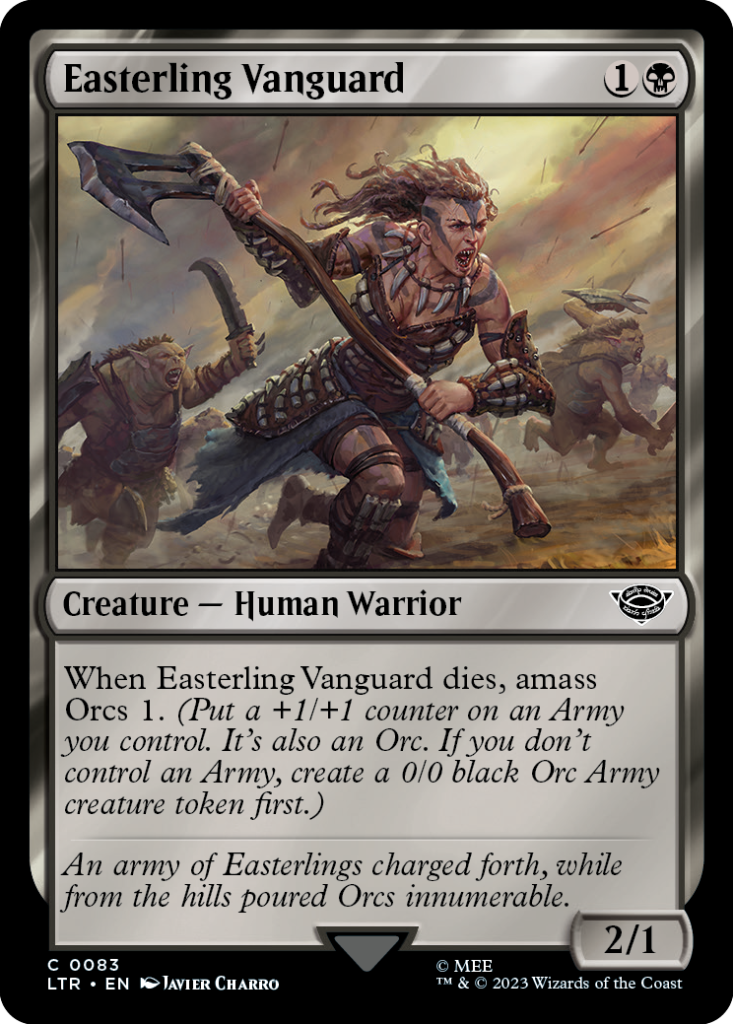
Similar to Amass from War of the Spark (errata’d to Amass Zombies), Amass Orcs X puts X +1/+1 counters on an Army you control, and if you don’t control one already you make a 0/0 black Orc Army token first and then put the counters on it. Amass Orcs gives you some extra baked-in value to cards that have other effects. I think a good way to think about Amass Orcs is that it’s a nice bonus effect to have. Because you make one token your army is susceptible to removal. You can find some beneficial play patterns, such as Lash of the Whip and Cirith Ungol Patrol:

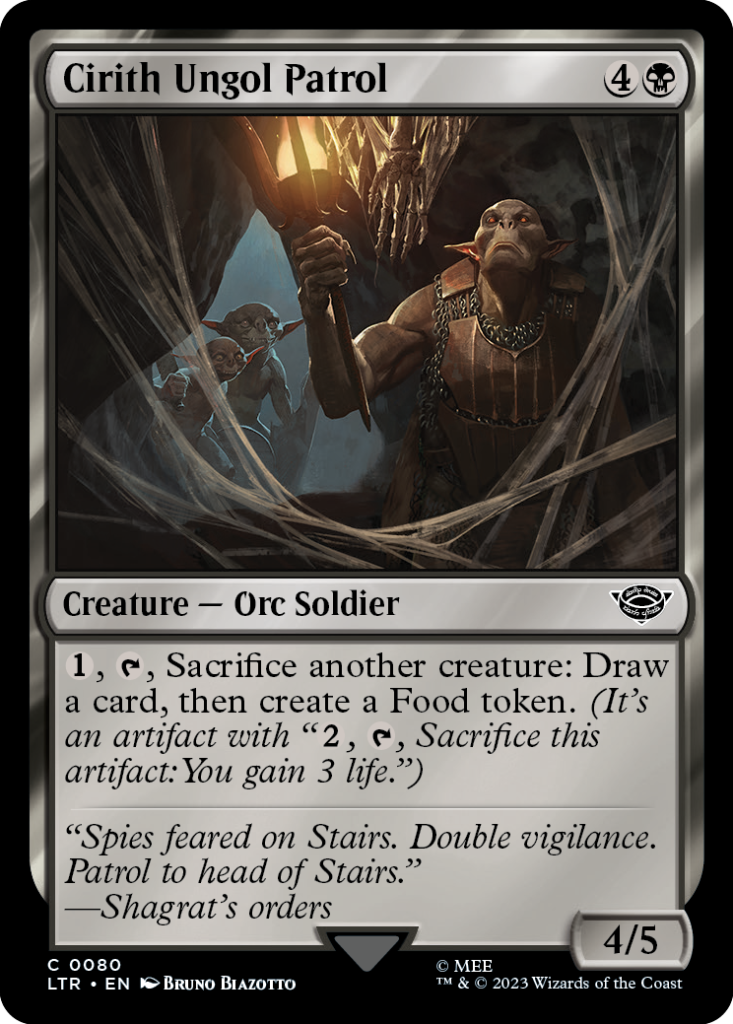
If you have a small Amass token you can use it as fodder for a sacrifice effect, then sequence another Amass card to regain your lost army. When playing Amass strategies you’ll have to consider sequencing on important turns to make sure you get maximum value out of your Orc allegiances.
These are the two main new mechanics of the set, but there are also some returning mechanics. Most notably is Food and a Legendary matters subtheme, but Landcycling, Sagas, and Stun Counters also make an appearance in this set.
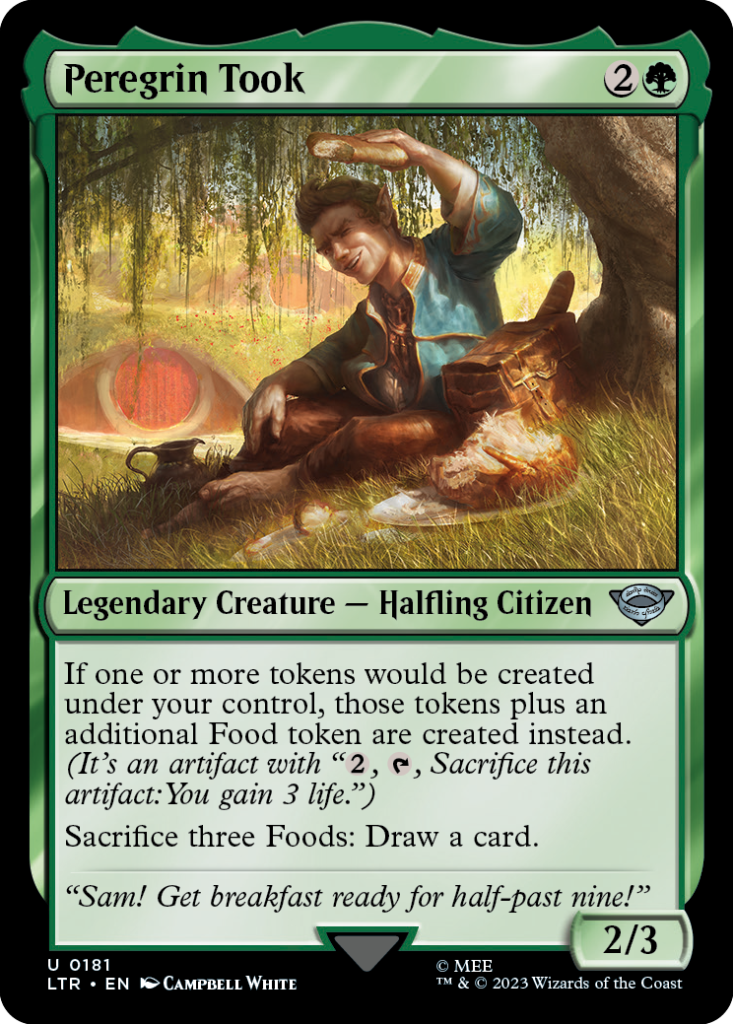
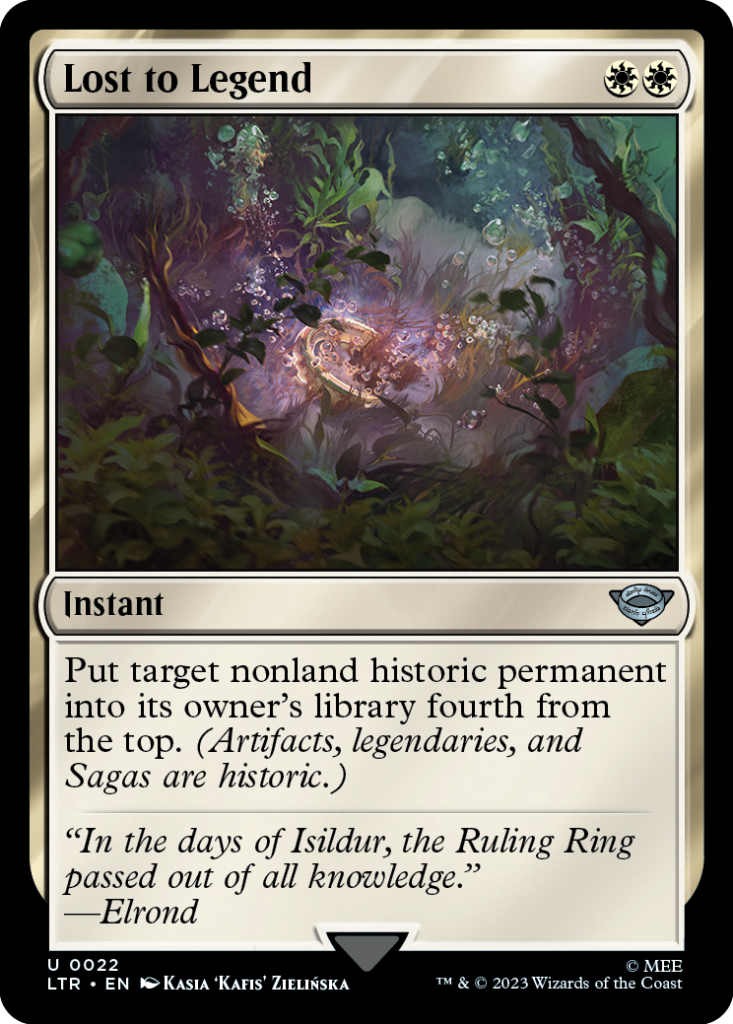
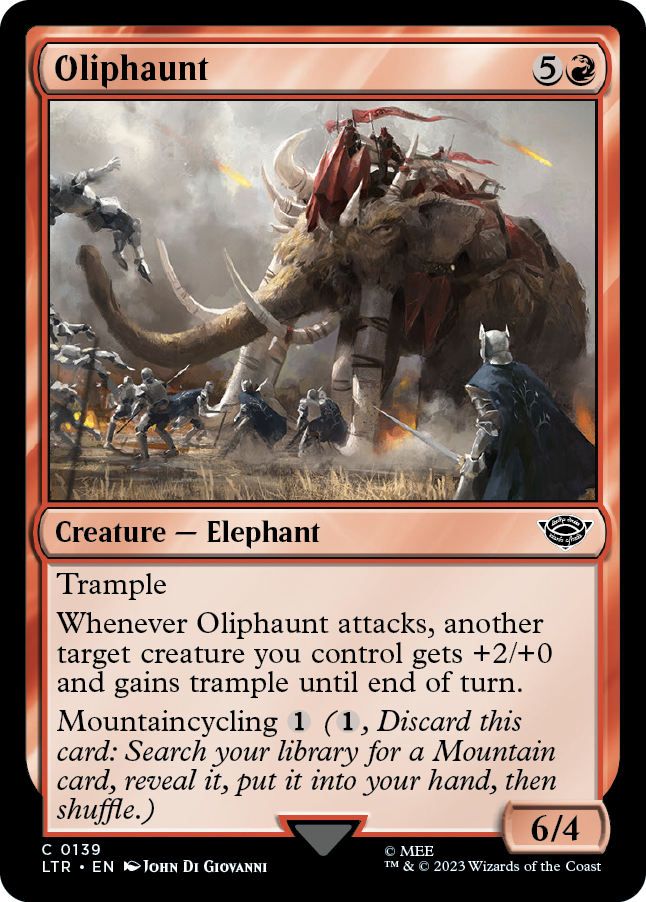
The next important thing to note about this set is that every two-color combination has a designated archetype which it wants to be in. This isn’t a new concept to Limited, but I will say that this set is much more synergy-focused than a recent standard set, such as March of the Machine. It’s pretty clear what cards want to end up in the same decks.
One disclaimer, which I usually include in all of my prerelease primers, is that in general sealed is a format that is more about power than synergy. In Sealed you want to find ways to out-value your opponent in the long game, as opposed to draft where decks can benefit off being more streamlined and aggressive. While this set focuses heavily on synergies don’t be afraid to splash a third, if not a fourth color in some of your decks (especially if you’re base-green and have fixing). You want to be playing your removal, card draw, rares, and ways to stall and win longer games as opposed to being hyper-aggressive. There are pools where building an aggro deck is correct, but on average I try and maximize my pool’s value than synergy when it comes to sealed, a format where your resources are much more limited than draft.
However, if you’re drafting this set for your prerelease, go nuts! There are ten very distinct archetypes in this format, and let’s take a quick look at all of them!
Selesnya (GW) – Food
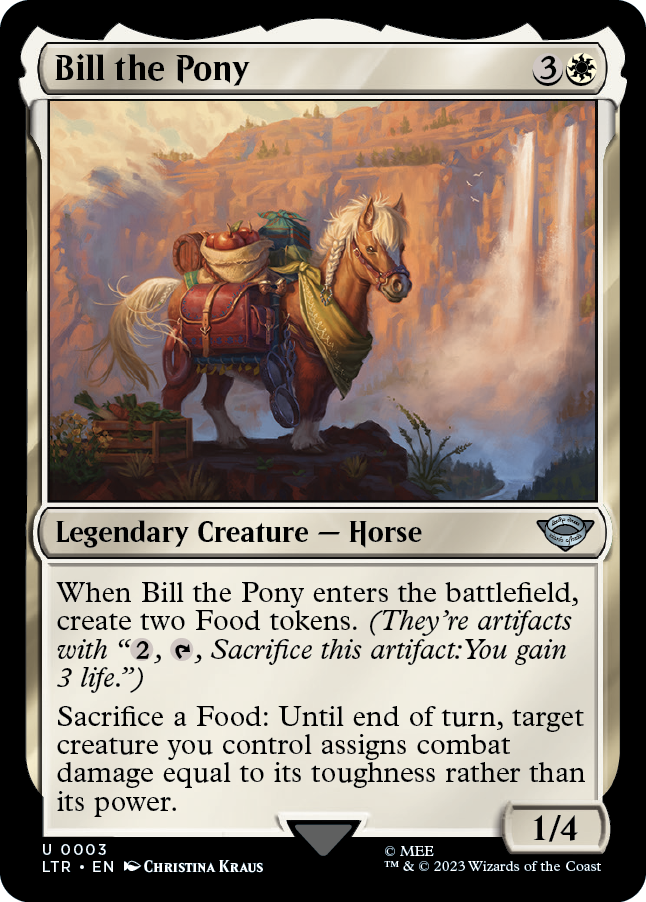
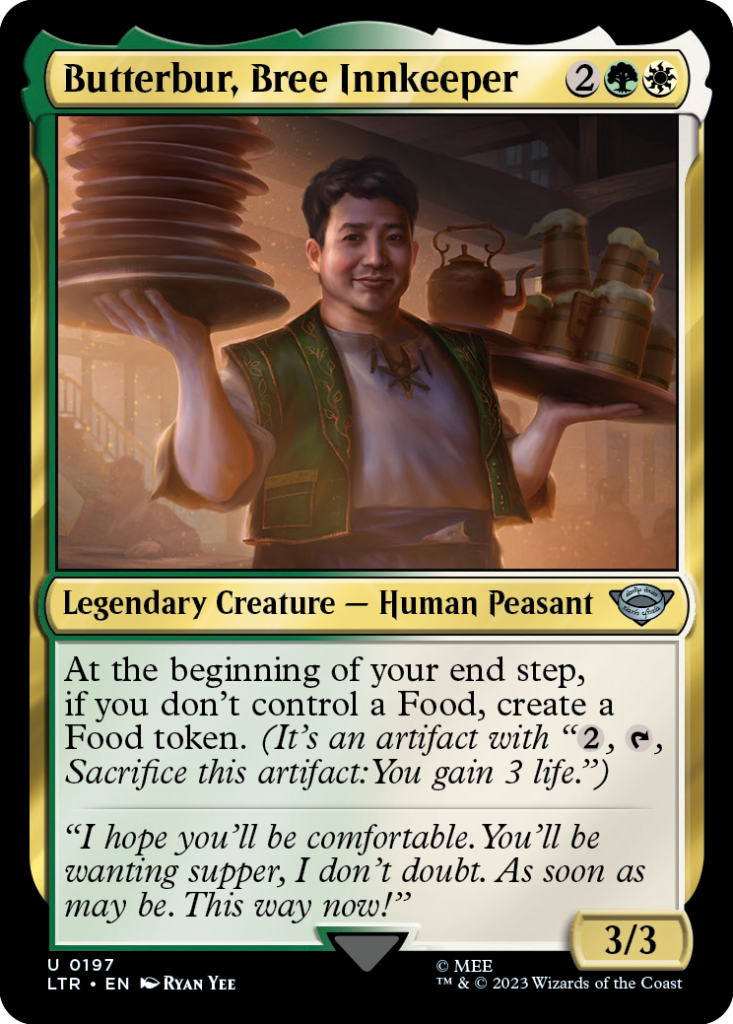

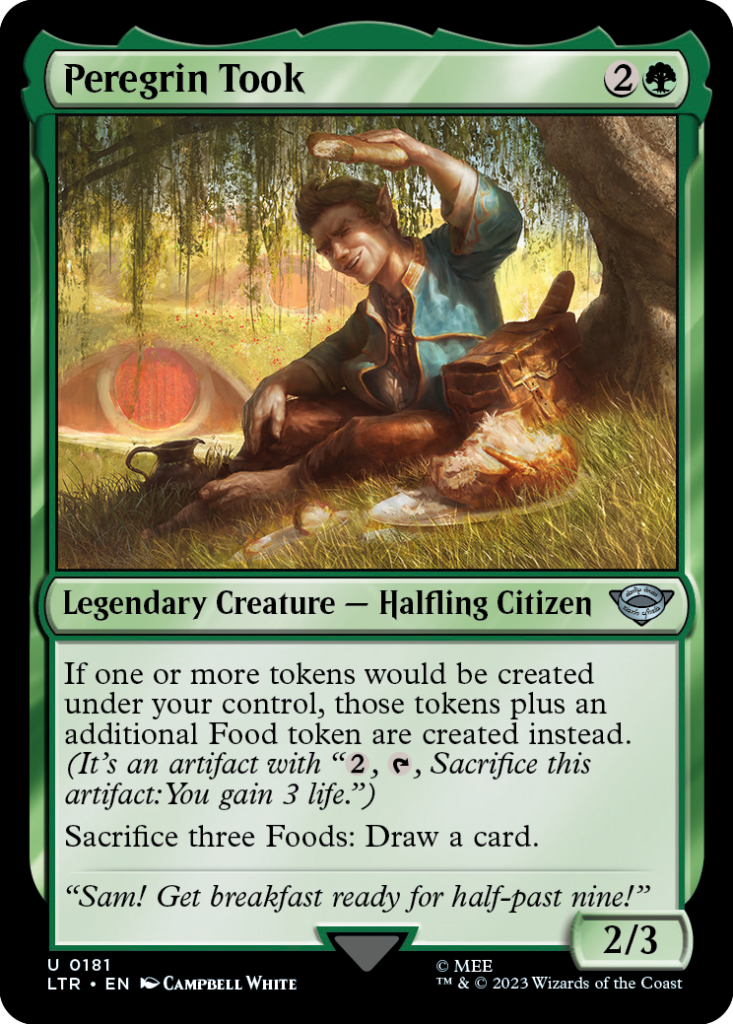
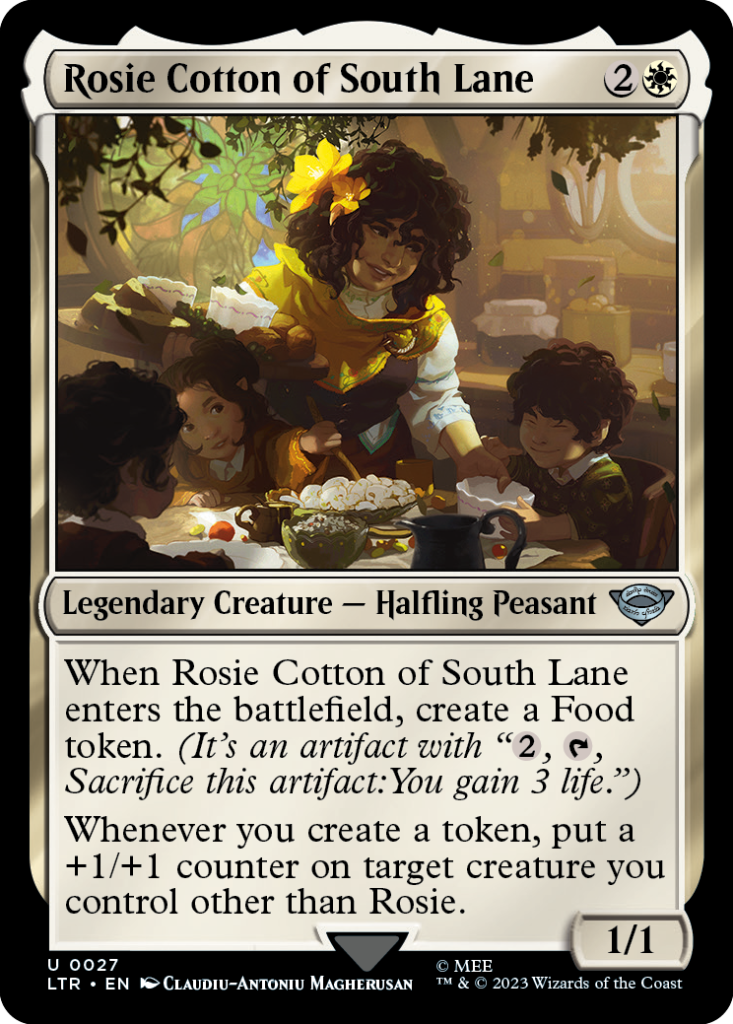
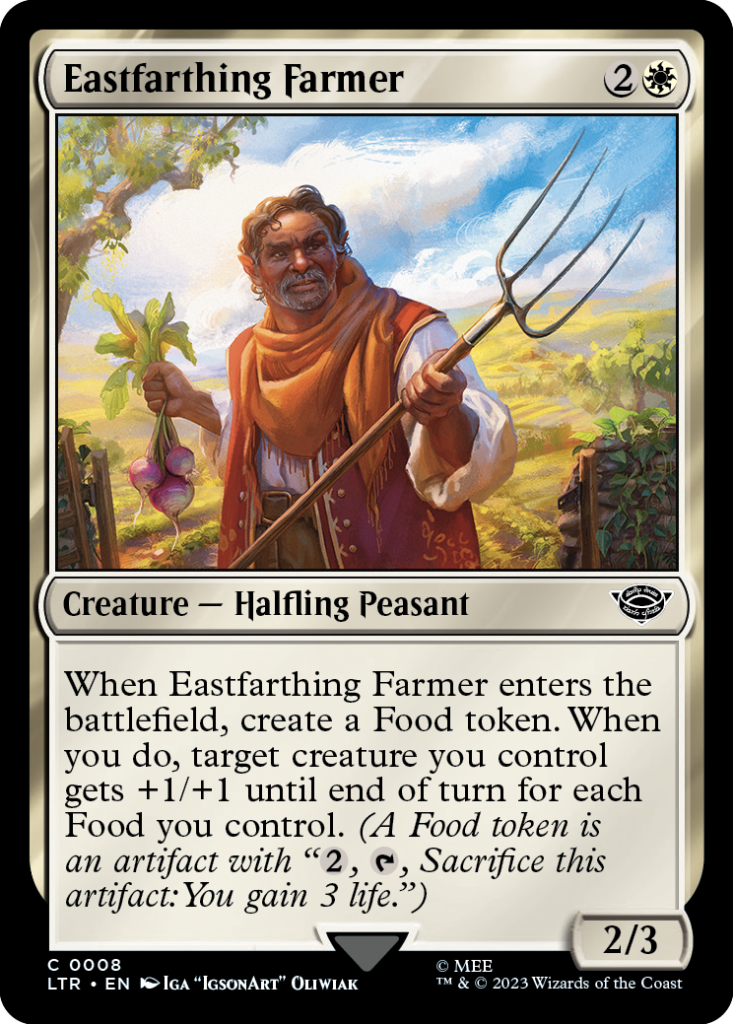
Selesnya is all about food synergies. You can combo off with Peregrin Took, Rosie Cotton, and Shortcut to the Mushrooms to create some wild board states. I do think this archetype is susceptible to interaction, so it might be worth picking up some protection spells and combat tricks to get around your opponent’s removal. I think Selesnya is strong against other decks that play to the board, but worse against decks with access to lots of removal and mill effects.
Simic (UG) – Elves/Scry
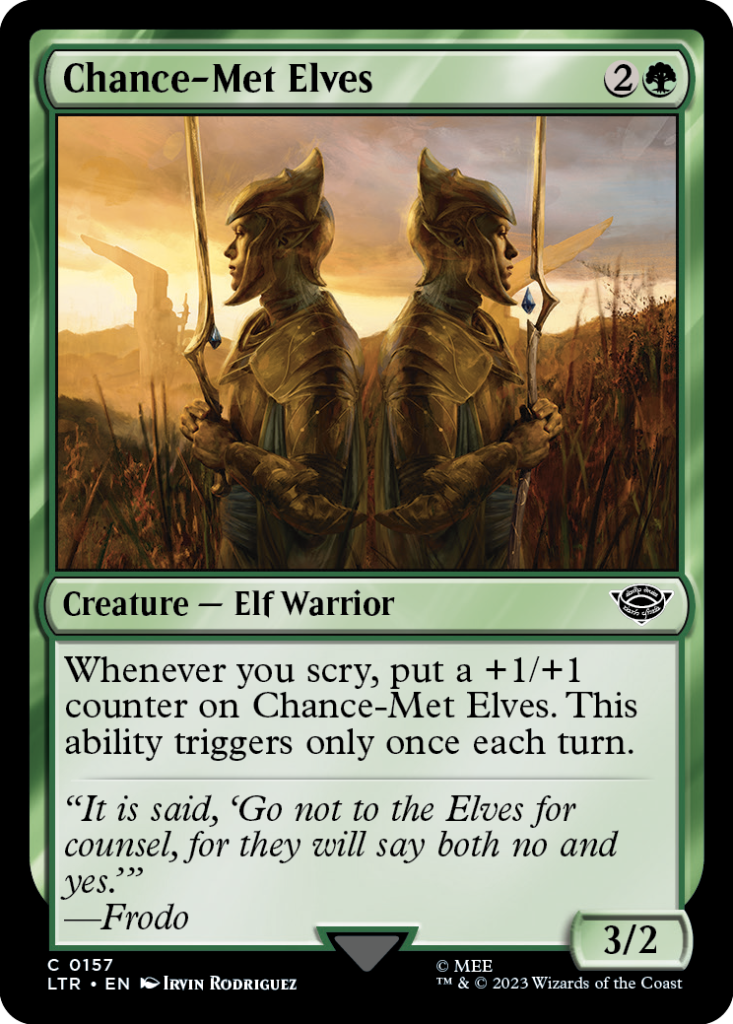
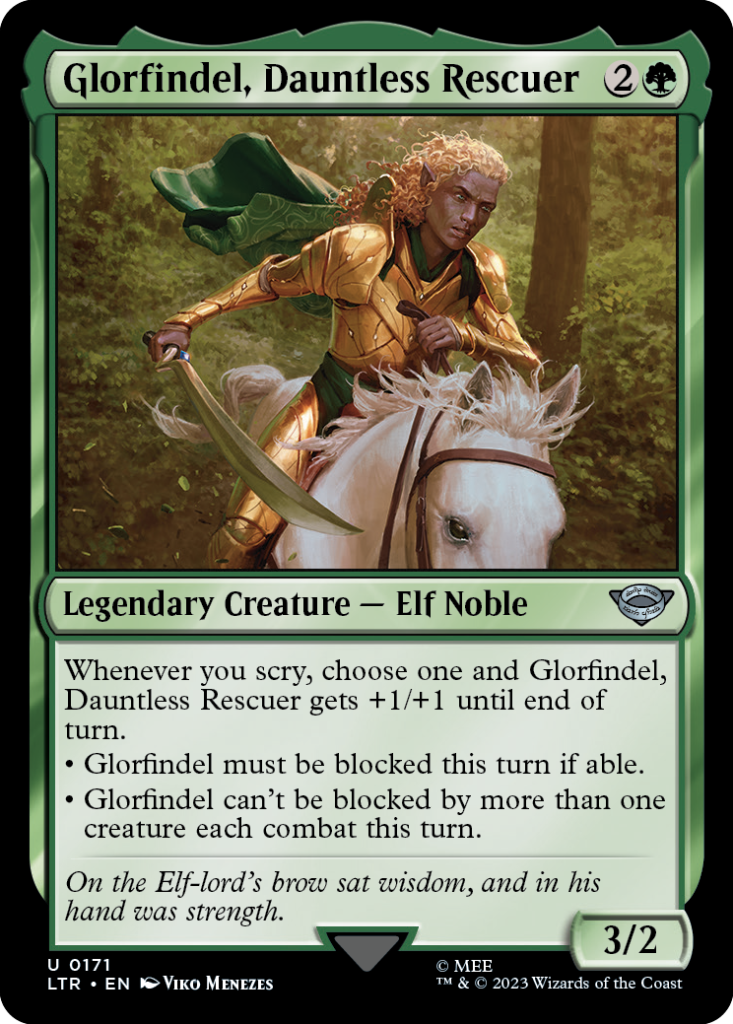
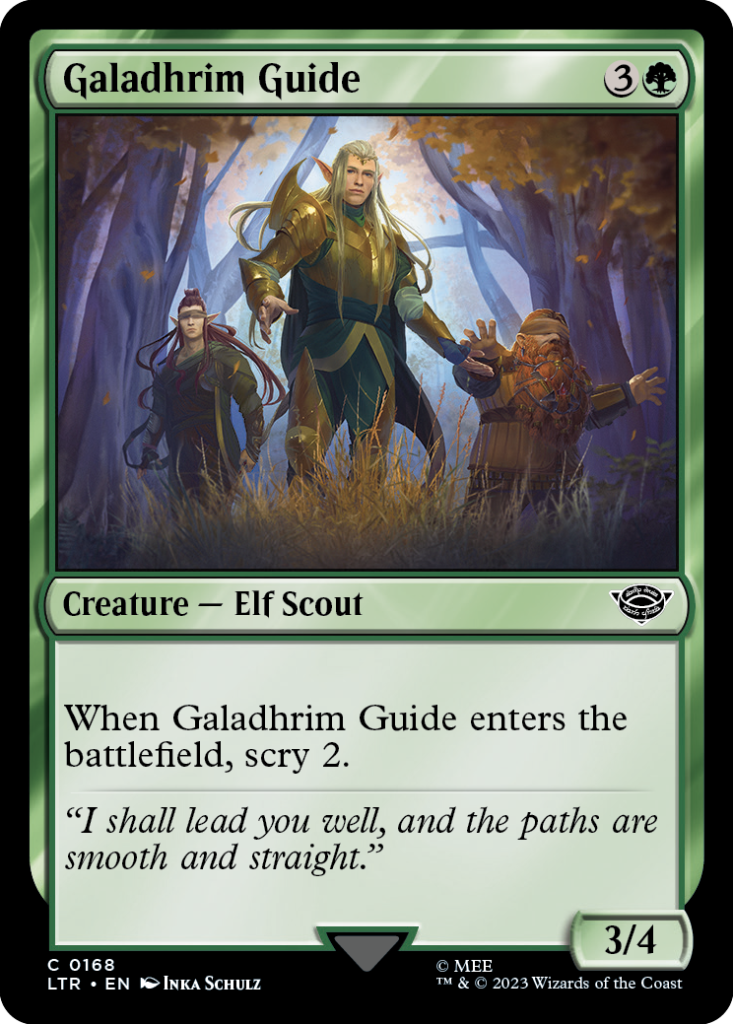

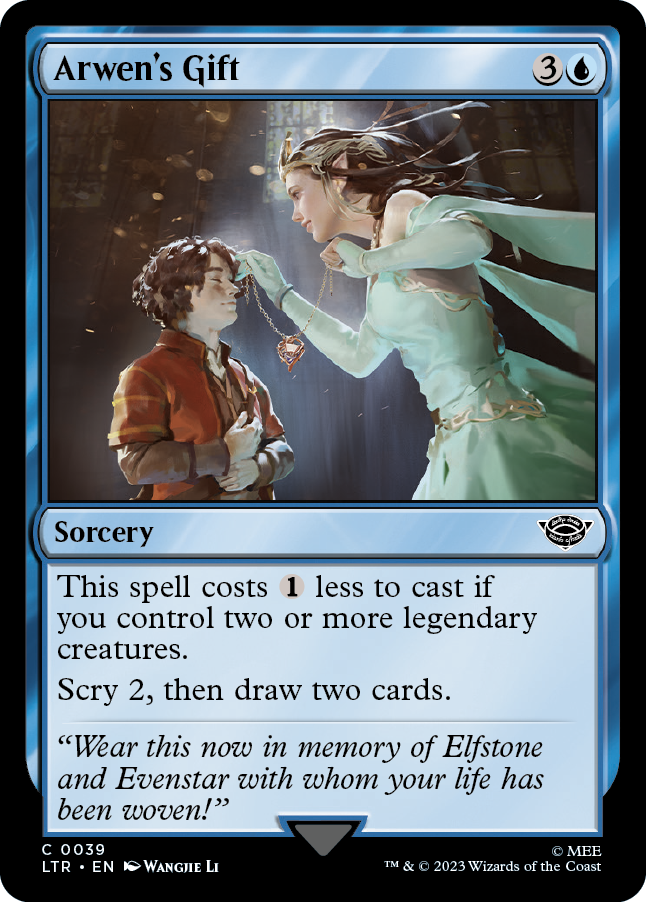
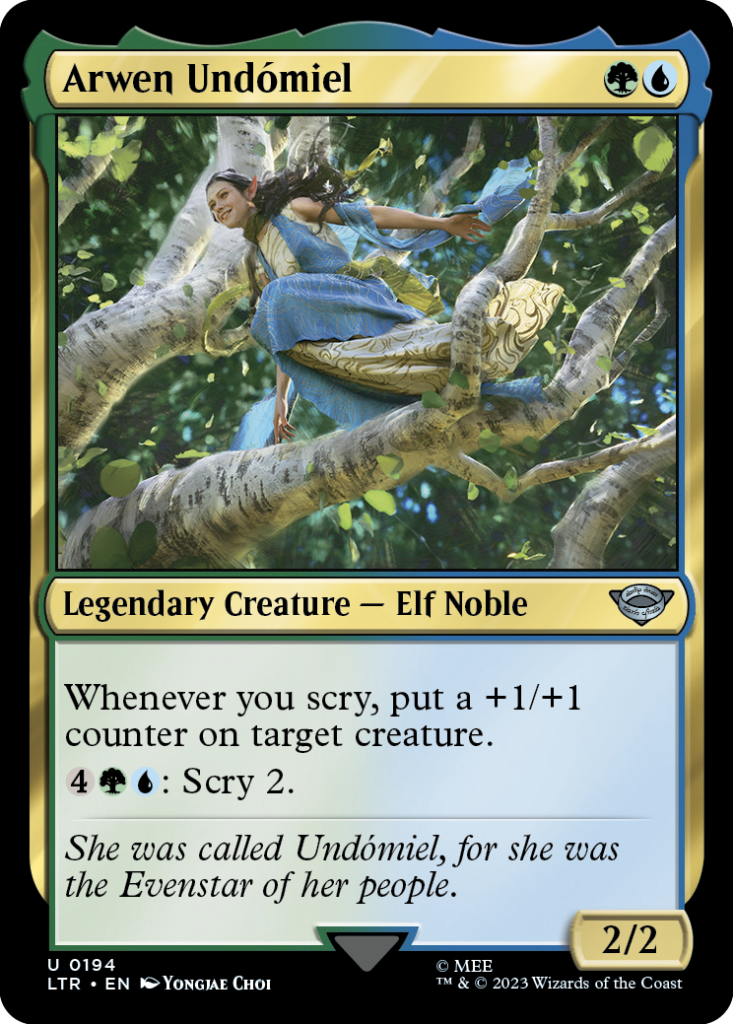
This archetype is pretty self-explanatory, you use scry effects to get bonuses, which are pretty much The Ring tempting you and +1/+1 counters. This feels similar to Selesnya Food, but you get access to more card selection and more flexibile interaction in blue. Green also has some pretty sizeable creatures you can grow to outpace your opponent’s board.
Dimir (UB) – Amass/Mill
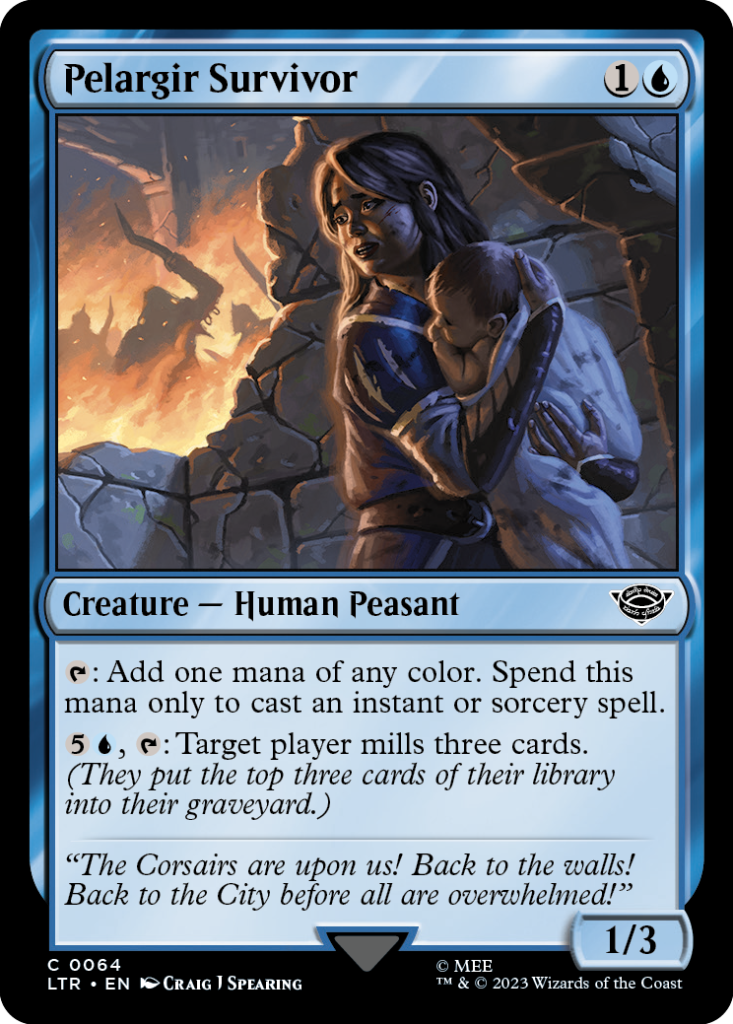
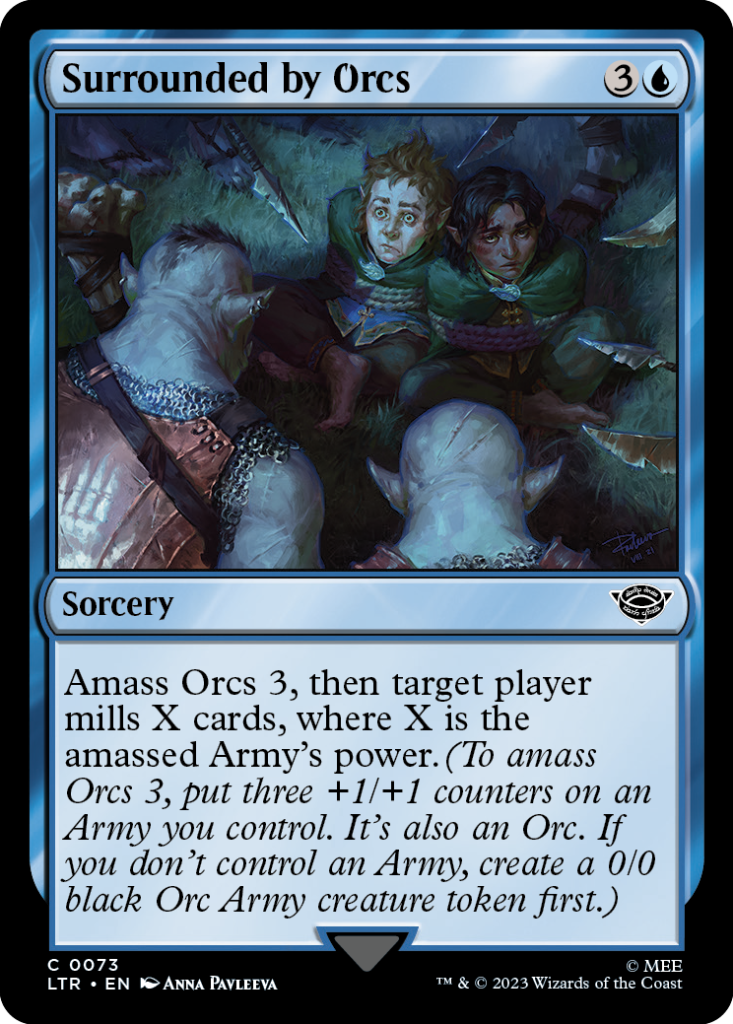
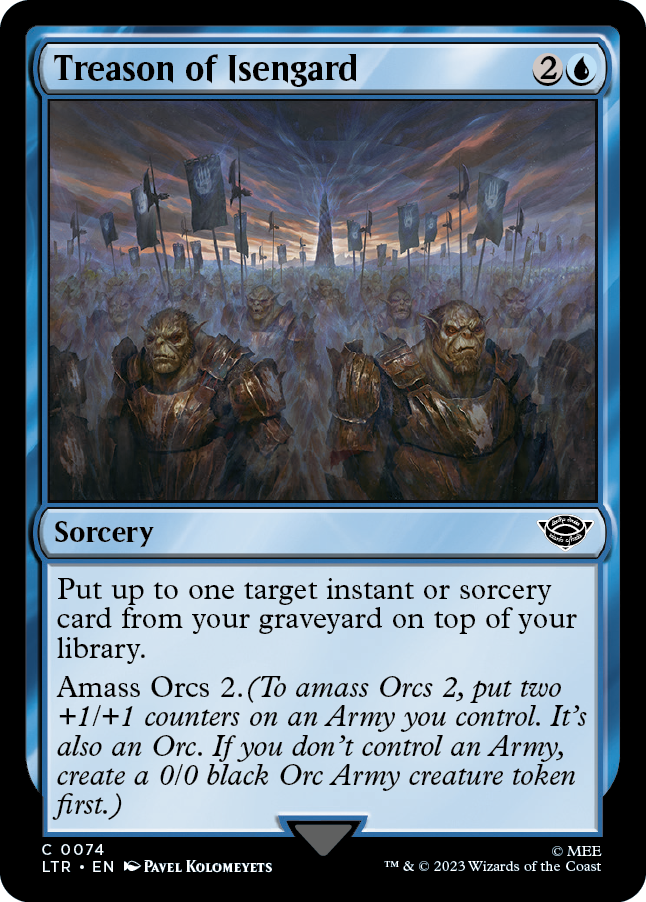
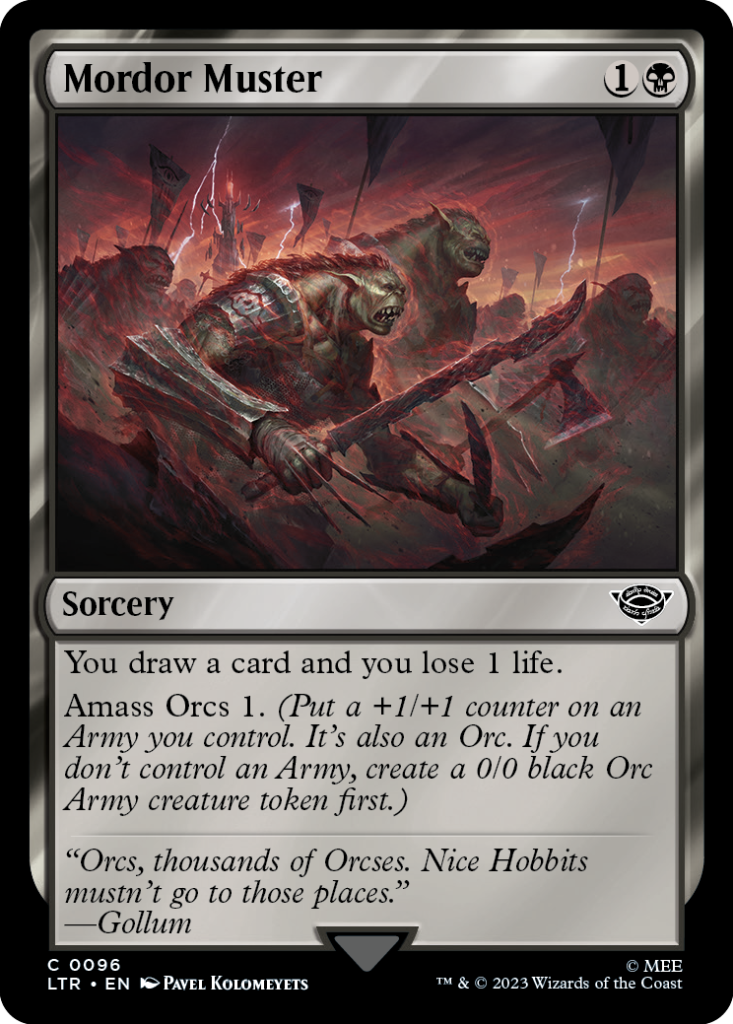
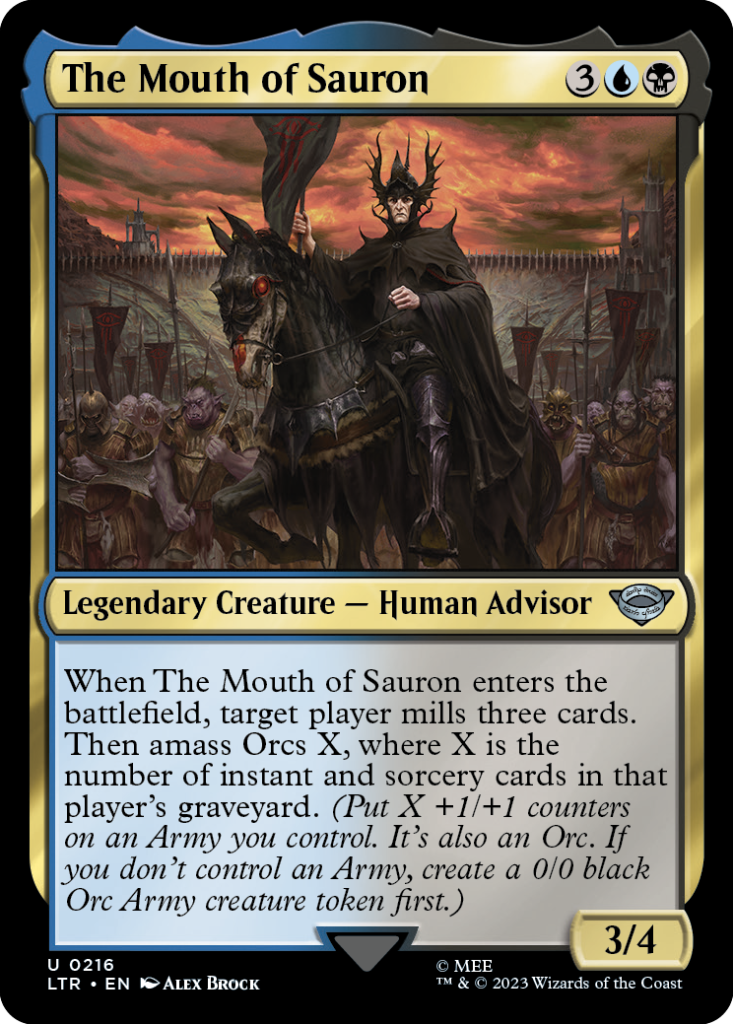
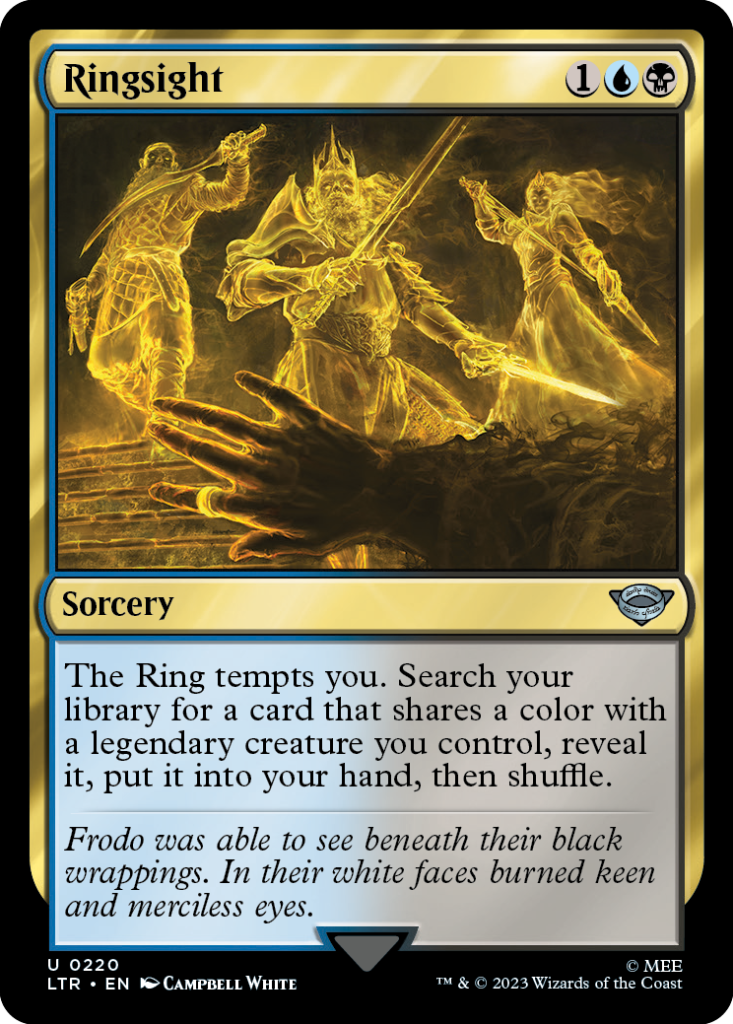
Dimir has to be my favorite archetype of this set so far. Blue and black are already deep colors, as they play into other archetypes in the set pretty nicely, such as Izzet spells, Rakdos Orcs/sacrifice, and Azorius draw-two. What’s most intriguing about Dimir is the mill strategy. You can set up some pretty nasty sequences with Surrounded by Orcs to mill your opponents for large amounts of cards at a time. Using The Treason of Isengard you can even set up for an even bigger mill turn on your next turn! I think this archetype is susceptible to fast starts from various white aggressive decks in the format, but with enough interaction you can stop your opponents in their tracks and do some serious mill damage.
Also – don’t sleep on Pelagrir Survivor – that card is nuts! It’s a 1/3 for two mana which already acts as a reasonable blocker in a defensive strategy. You can use it as mana ramp if you’re spell-based (which is powerful since a lot of the Amass Orcs cards are spell-based). Finally, it has a win condition stapled onto it! What more could you ask for as a blue mage??
Gruul (RG) – Power Matters
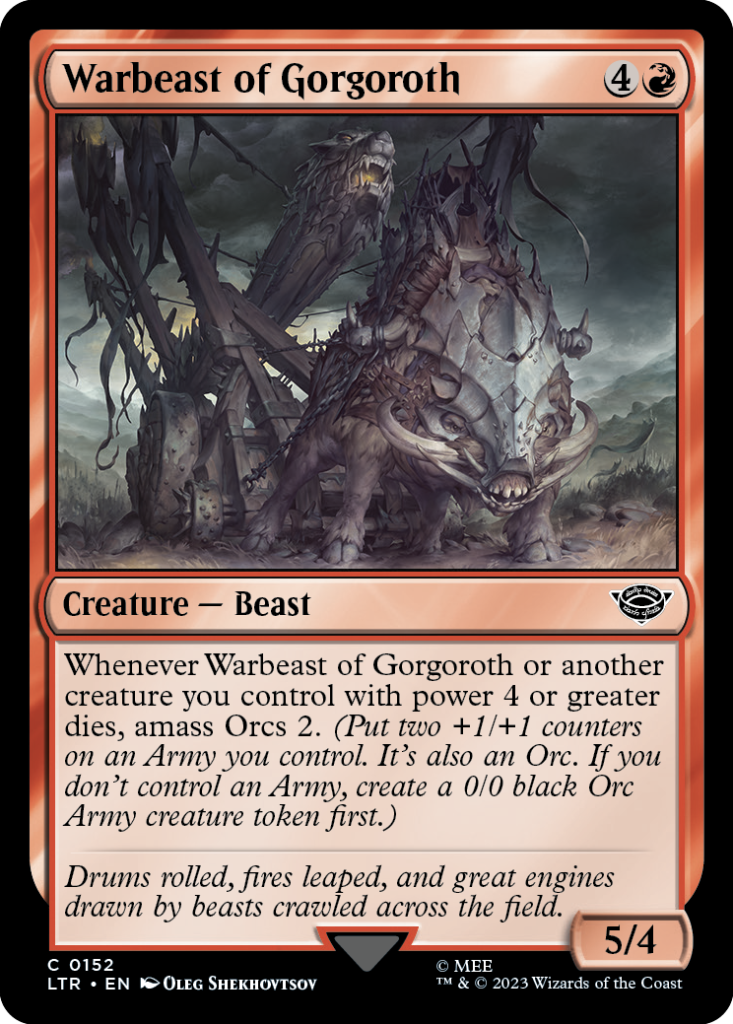
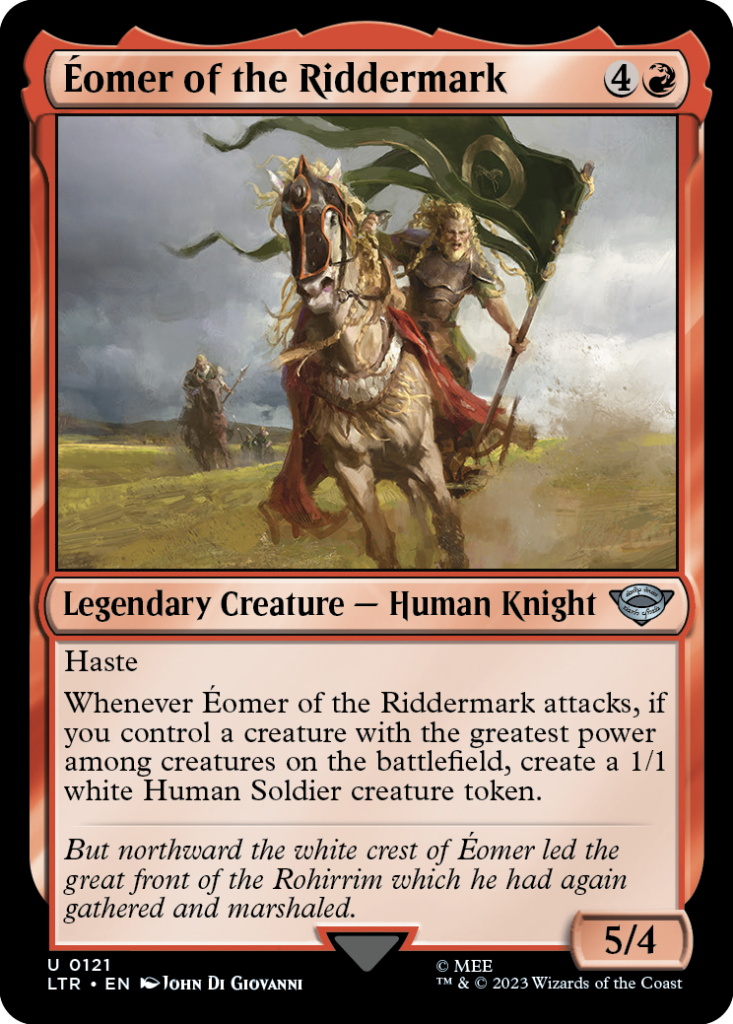
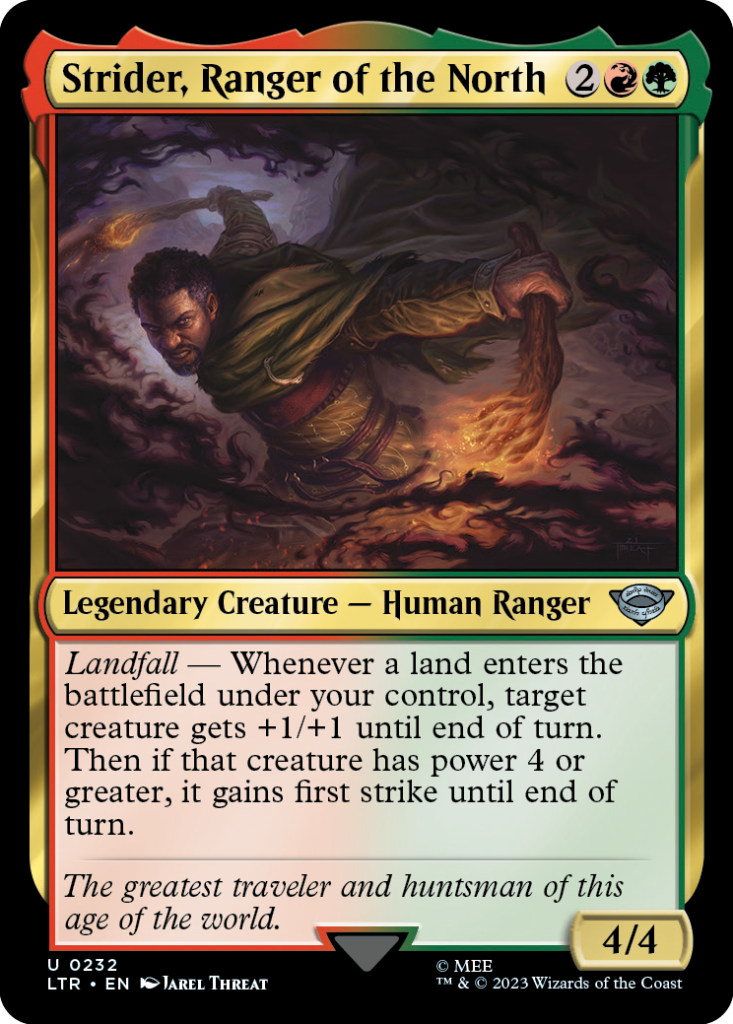
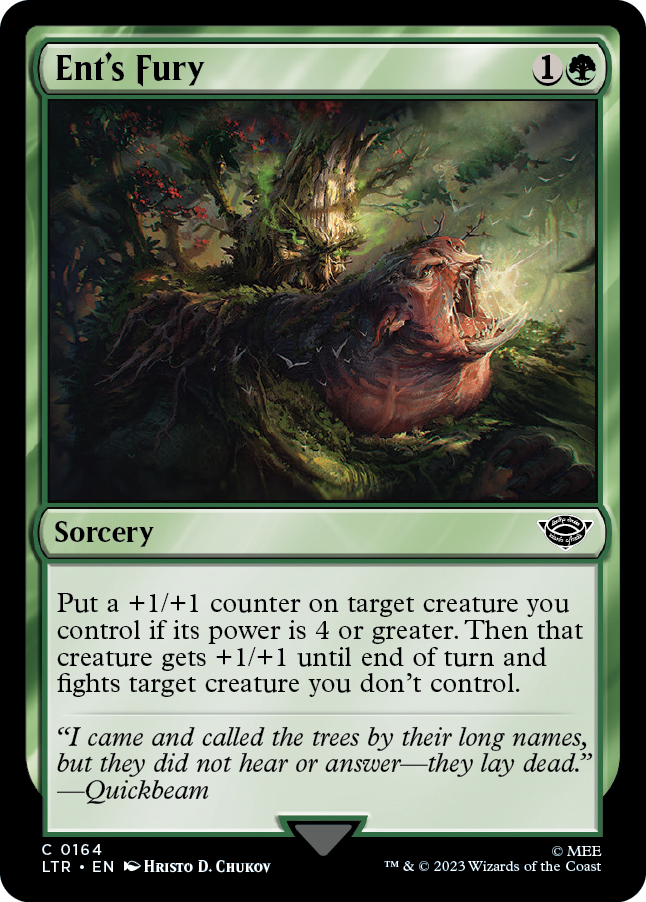
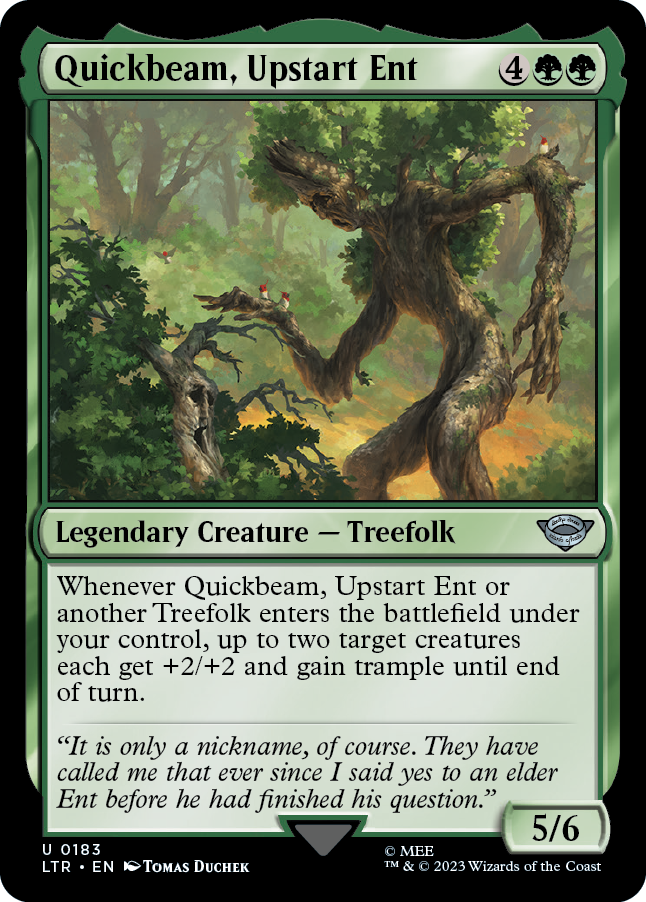
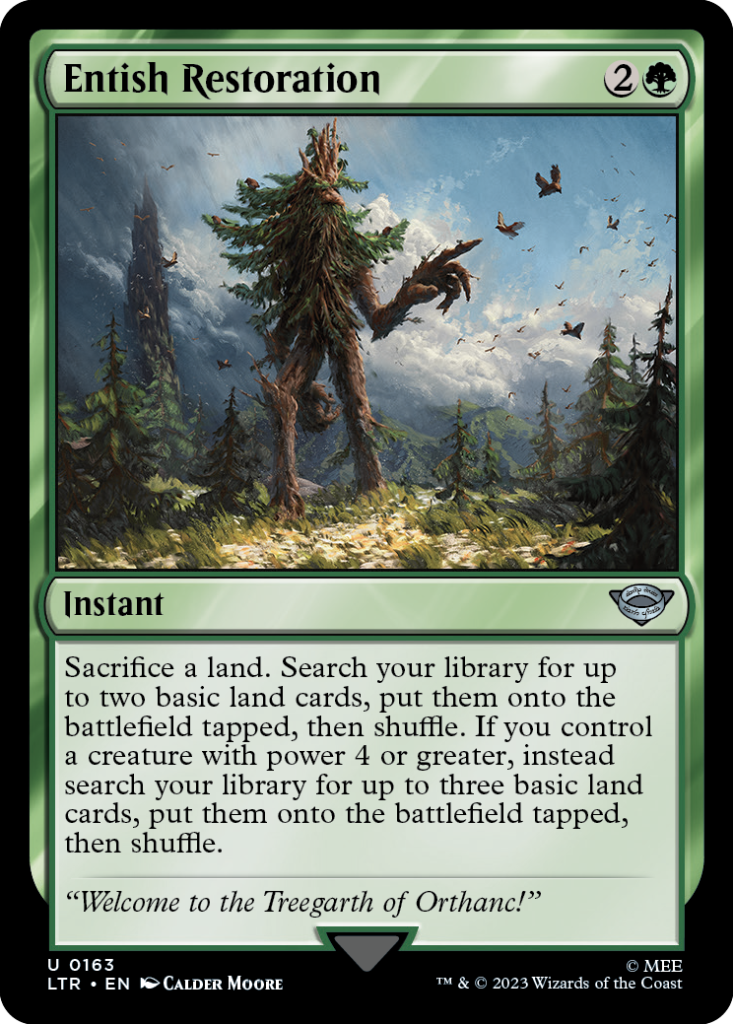
This is another archetype that’s pretty self-explanatory. You want to win the game with big guys! There’s also a nice Ent-subtheme in this archetype, and Quickbeam is no joke – that card is a house! You can utilize mana ramp in the form of Wose Pathfinder and Entish Restoration to power out some large tree friends early.
Orzhov (BW) – Tokens
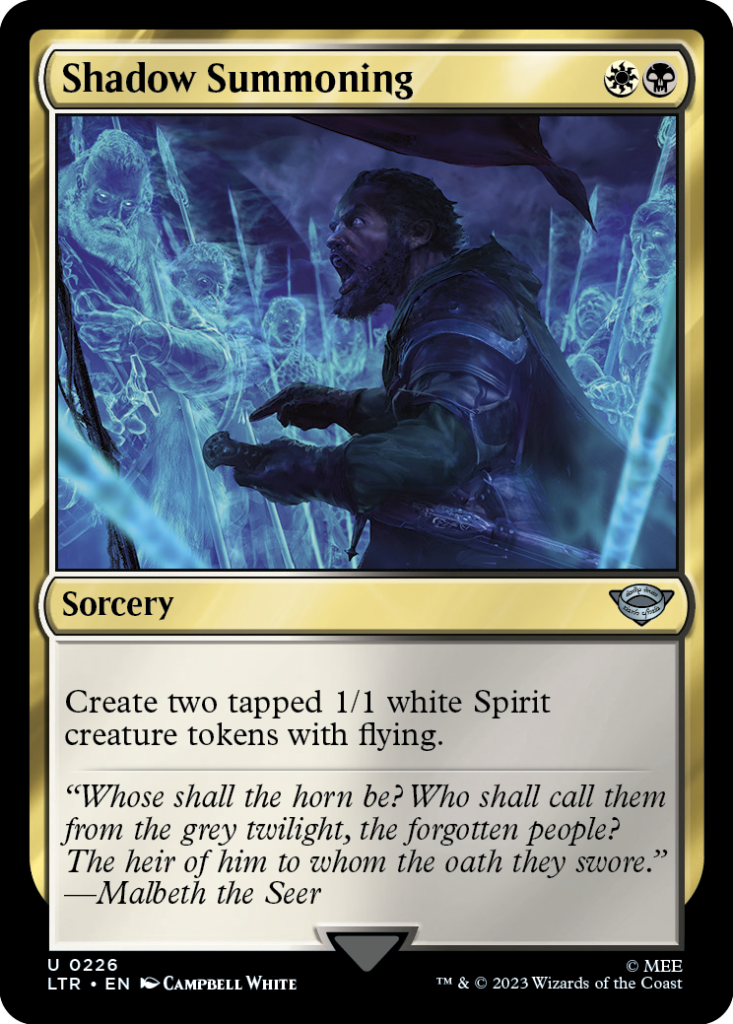
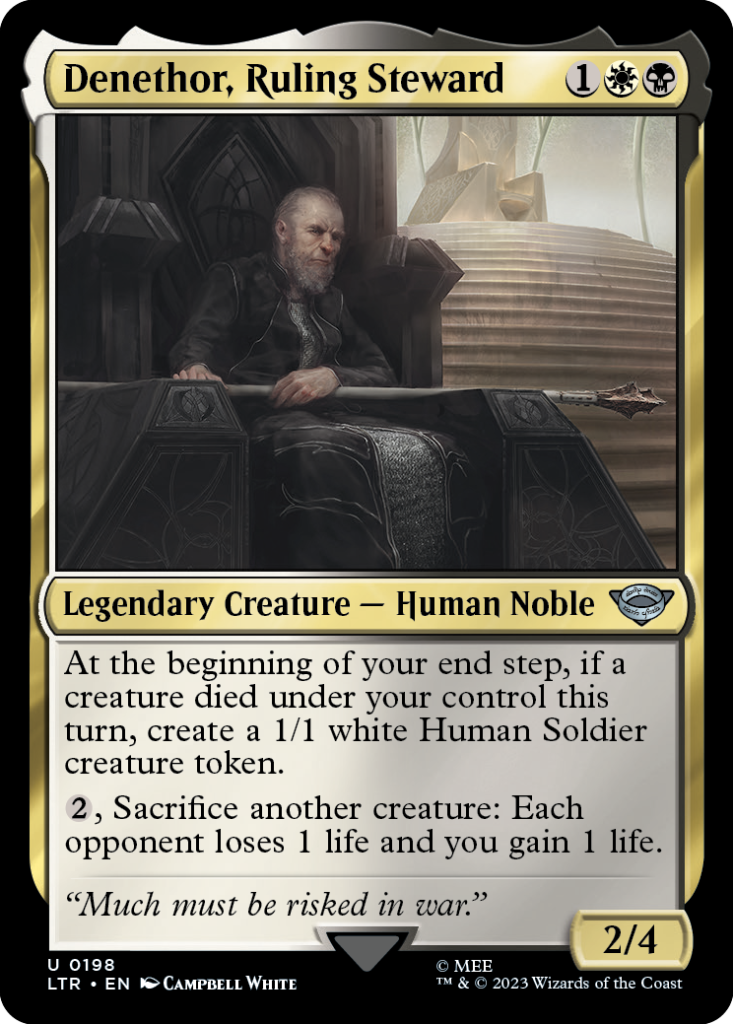
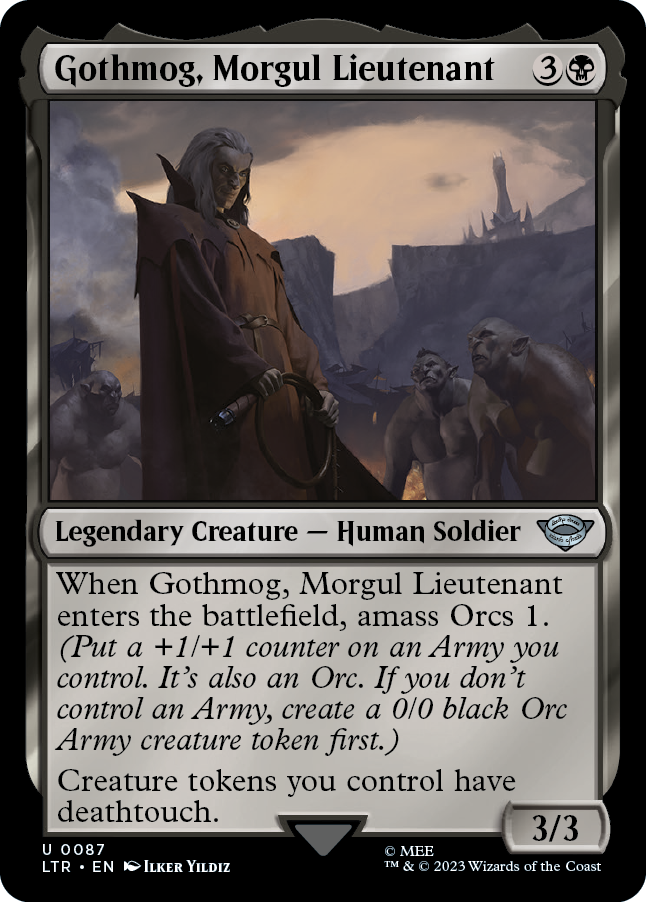
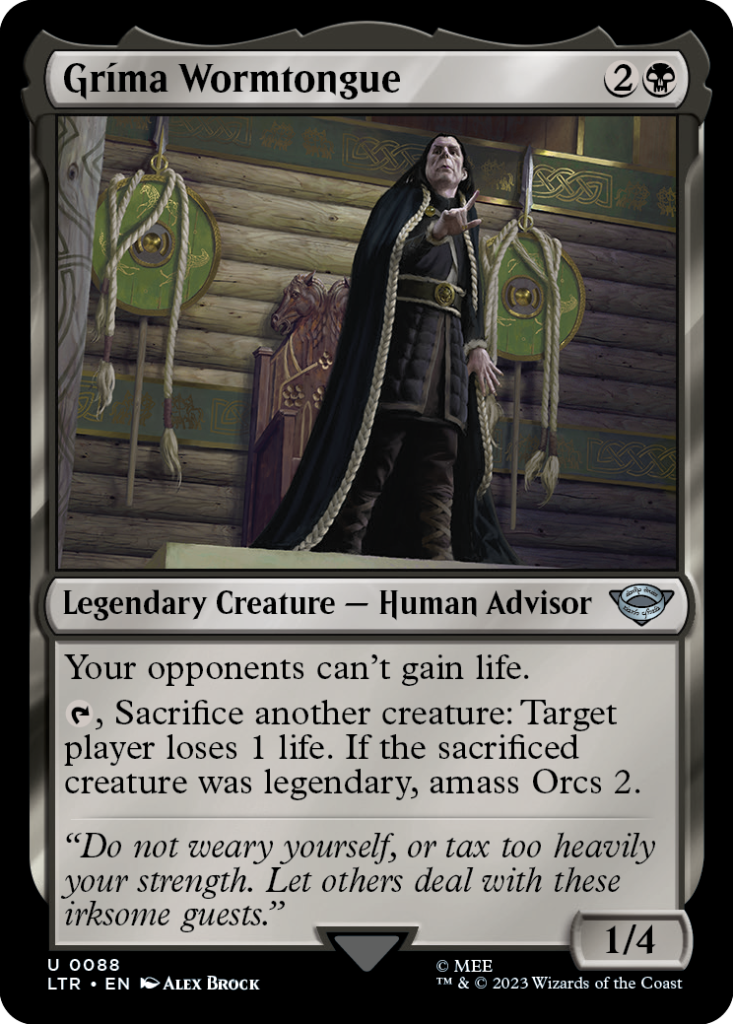

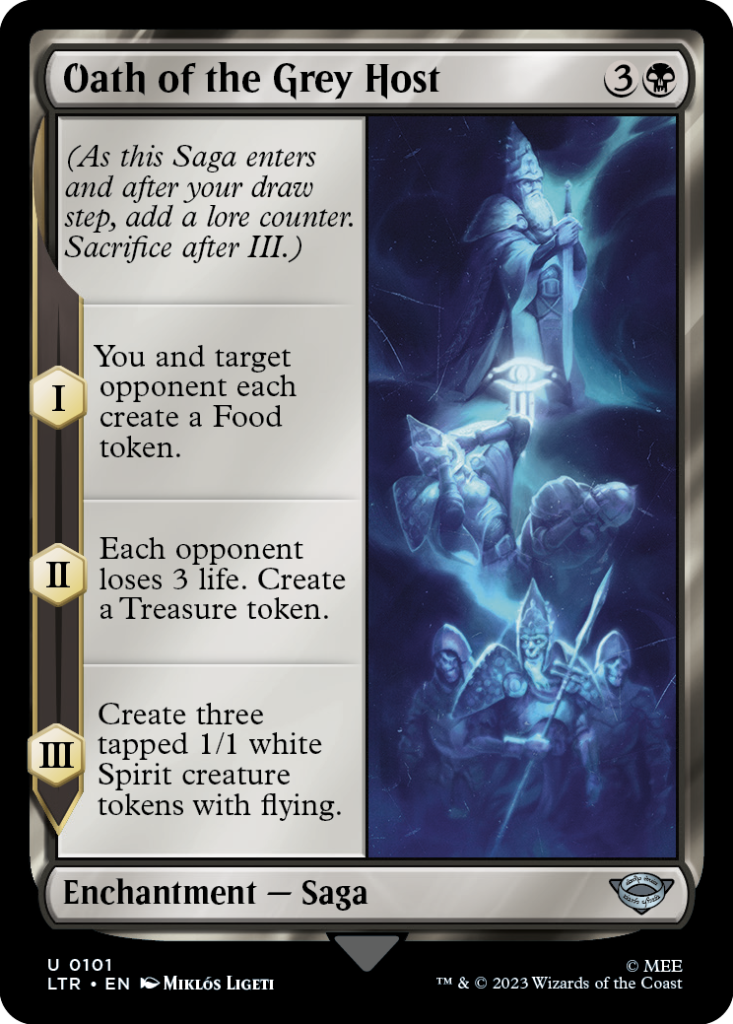
Orzhov is a tokens-matter theme, with a sacrifice sub-theme. Oath of the Grey Host is a very strong pickup in this strategy, allowing you to do some nasty combos with Mirkwood Bats. You can peck your opponent down in the air with spirit tokens and then utilize sacrifice outlets like Grima Wormtongue or Denethor to get in the last points of damage against your opponents. Grima is actually one of the cards I think is most important to this archetype to combat Selesnya food. Even if your opponent isn’t Selesnya, there are so many ways to make food in this format that I think Grima is a must-have for this deck.
Azorius (UW) – Draw Two/Flyers
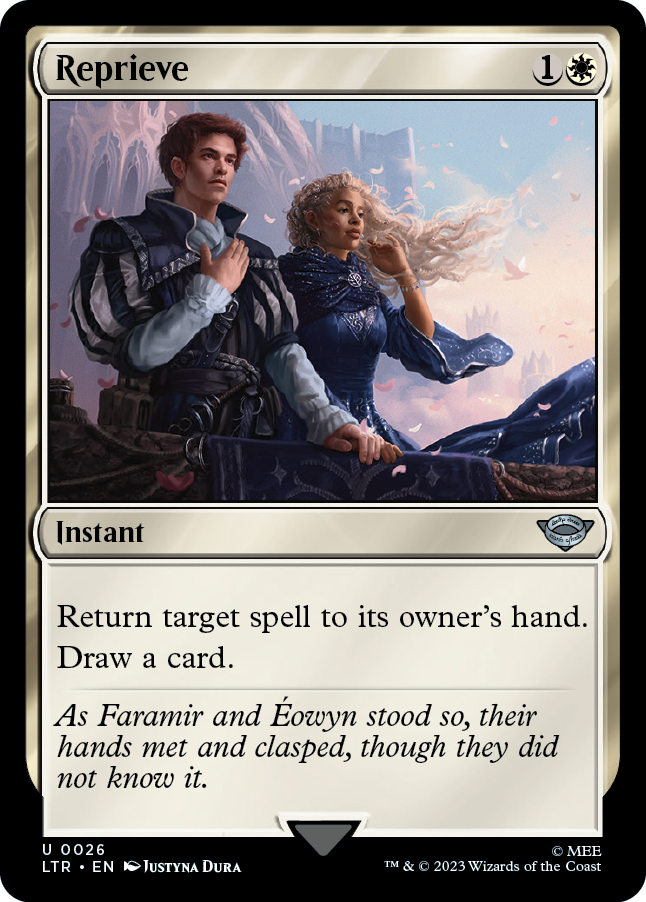
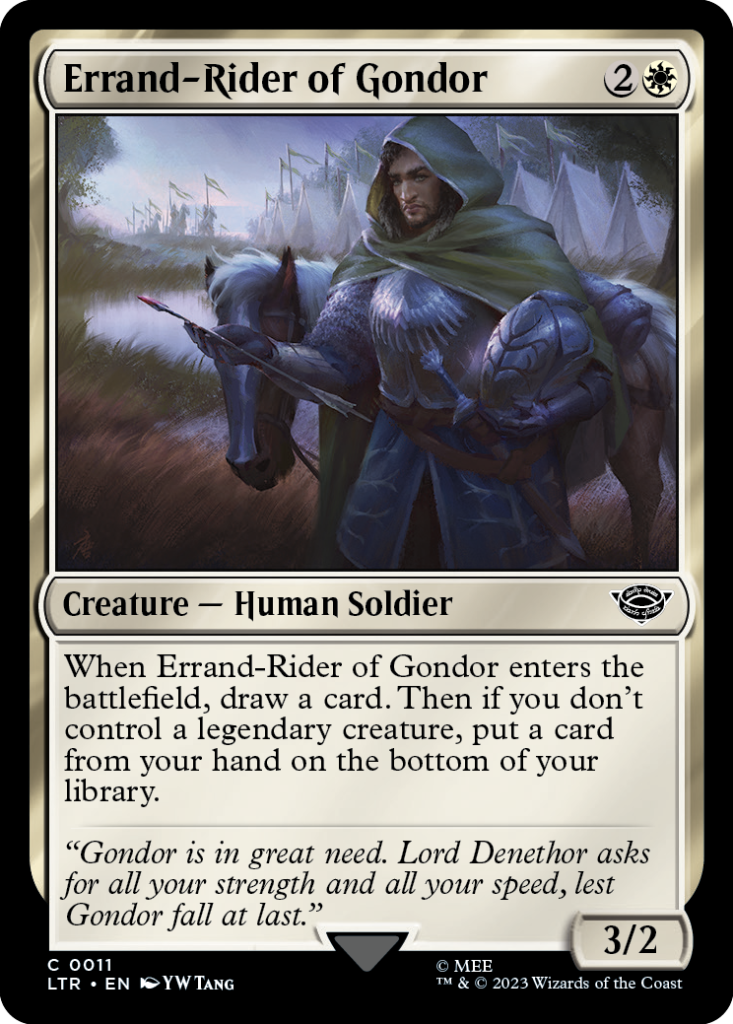
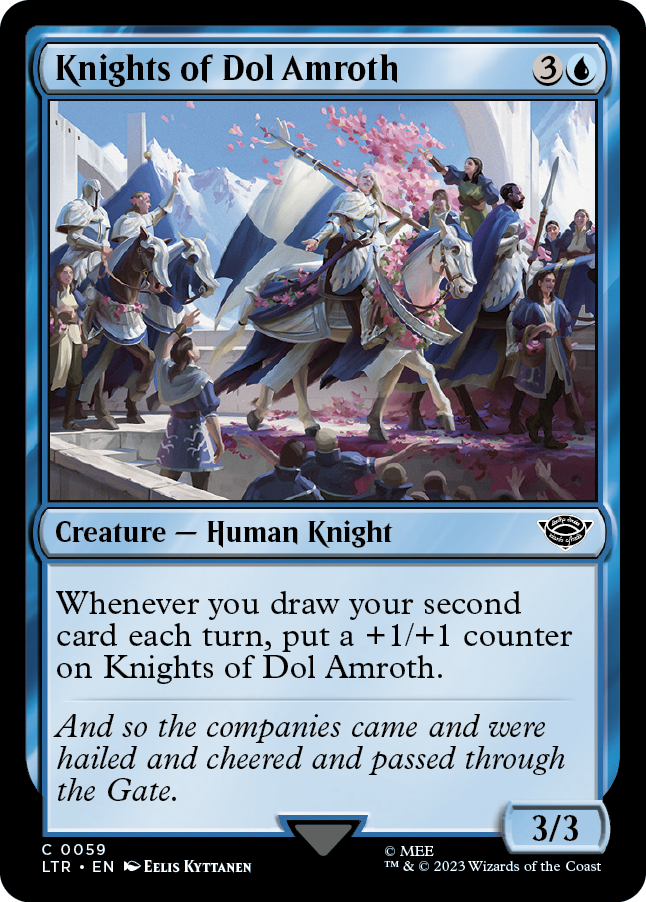
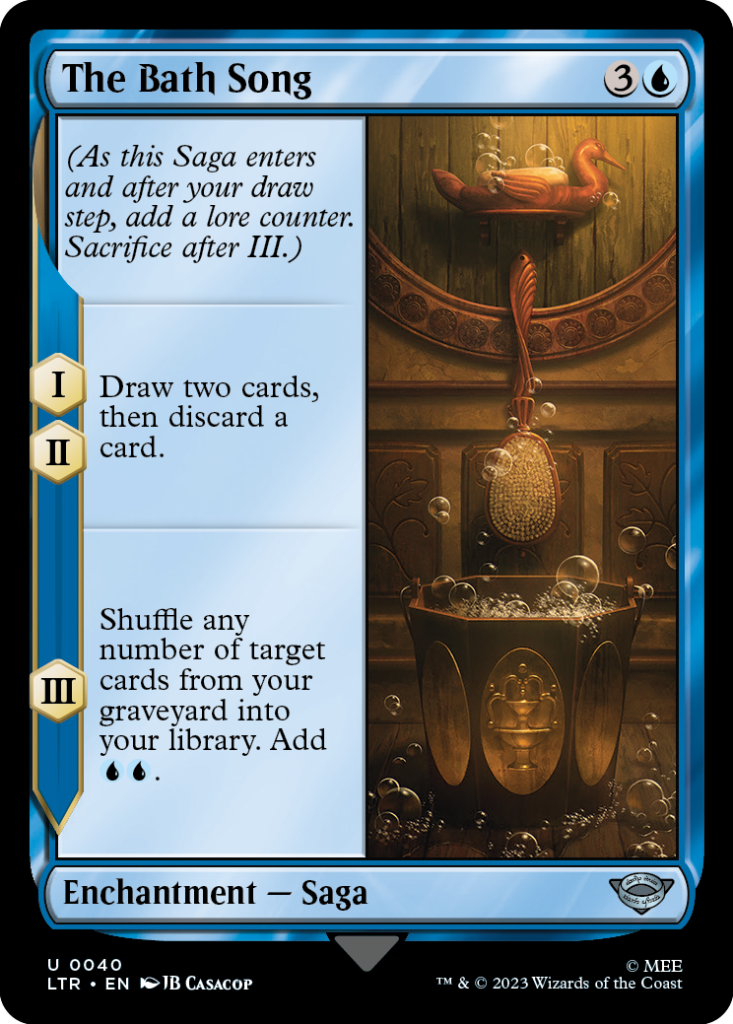
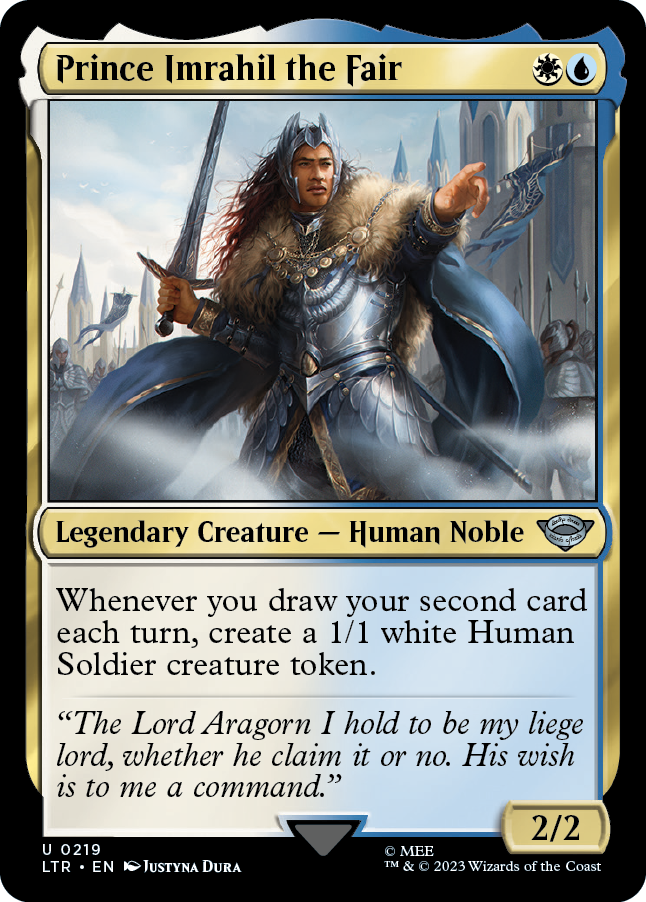
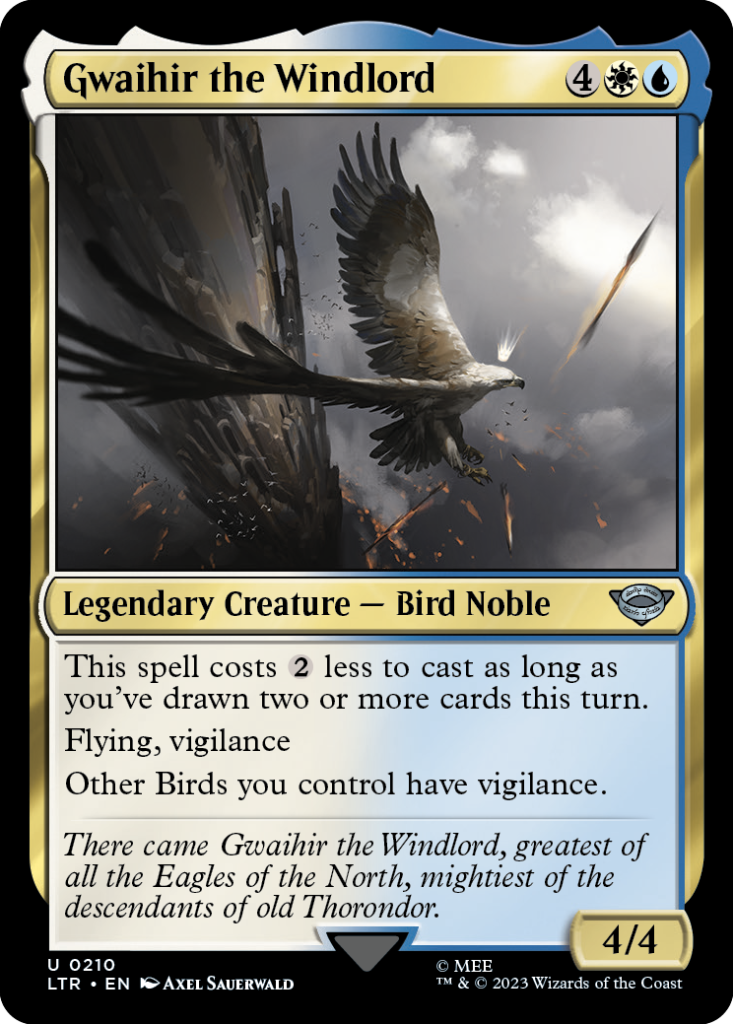
Azorius is all about cards that benefit off you drawing two cards in a turn. You can gain some powerful board control with cards like Prince Imrahil the Fair, and while the board is locked down you can win in the air with various flyers like Gwaihir the Windlord (a great attacker and defender). Your goal is to out-tempo your opponents, keeping control of the board while also drawing ahead of them utilizing cards like The Bath Song.
Golgari (GB) – Graveyard Recursion/Self-Sacrifice
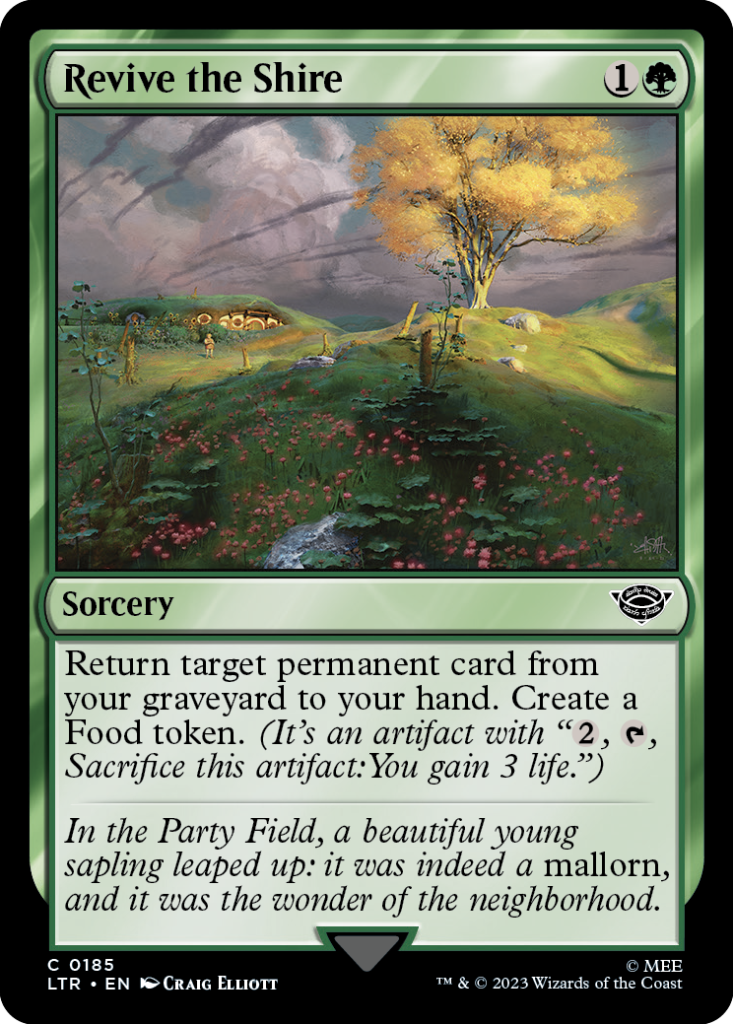

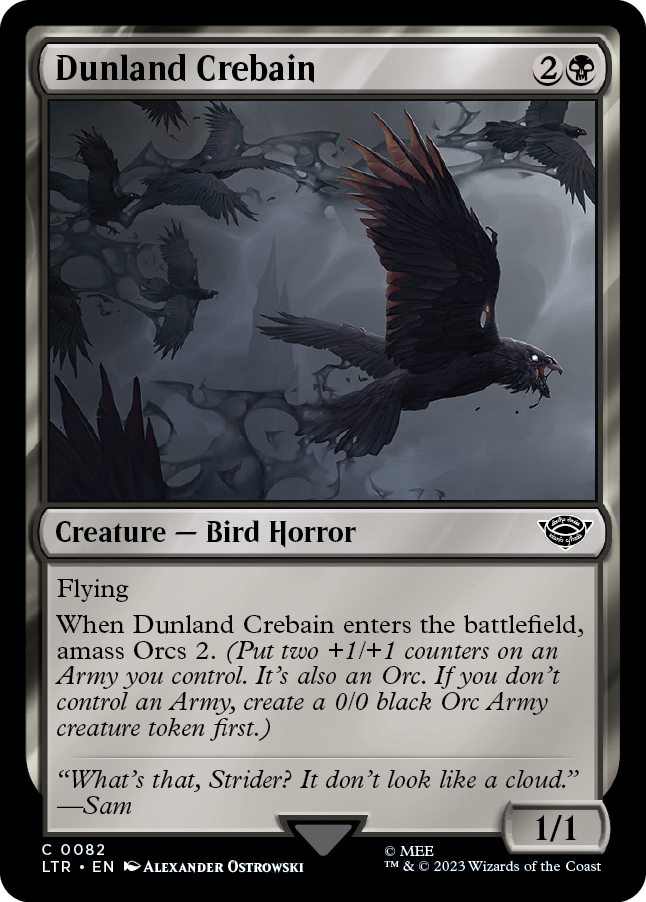
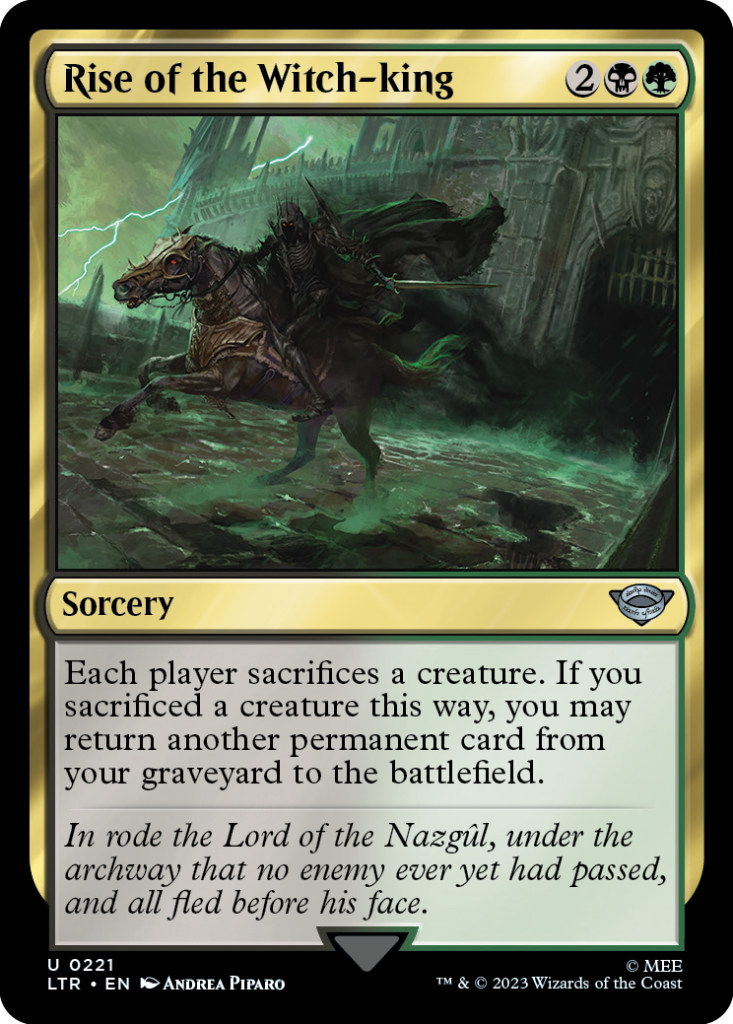
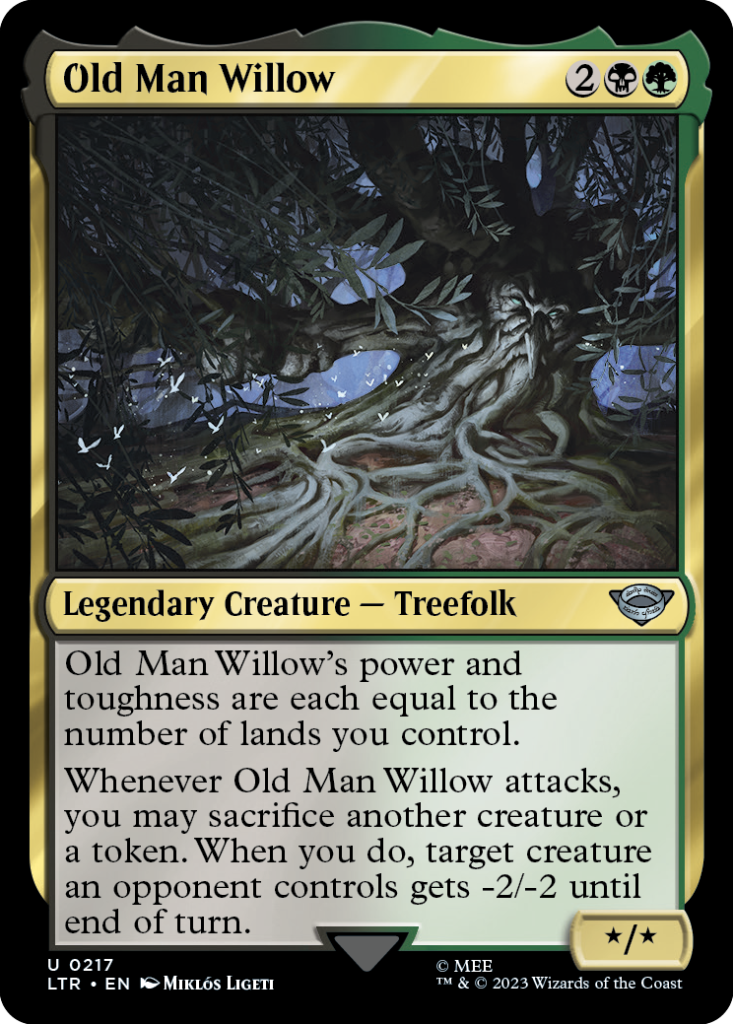
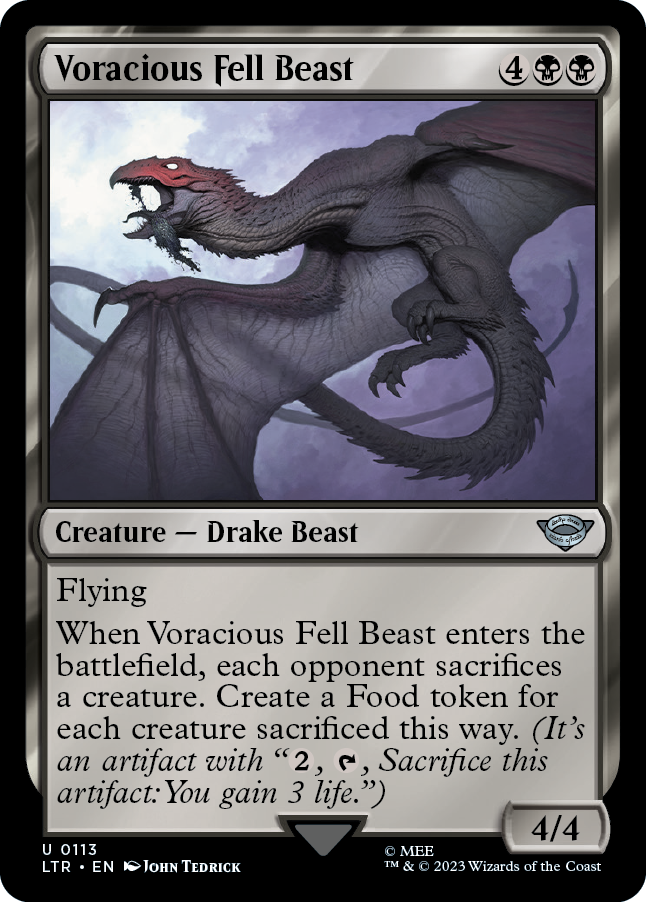
Golgari is about gaining value by sacrificing permanents and some graveyard recursion. You can pull of some nasty combos, such as cycling Generous Ent to then return to the battlefield on turn four (or as early as turn three with a mana dork like Wose Pathfinder) with Rise of the Witch-King. Old Man Willow is a house, and you can sacrifice some leftover food or small Amass tokens to start taking down your opponent’s board when you attack. You can get value out of creatures that make tokens to use as fodder for your sacrifice payoffs. Peregrin Took is also very powerful in this archetype.
Rakdos (RB) – Goblins/Orcs
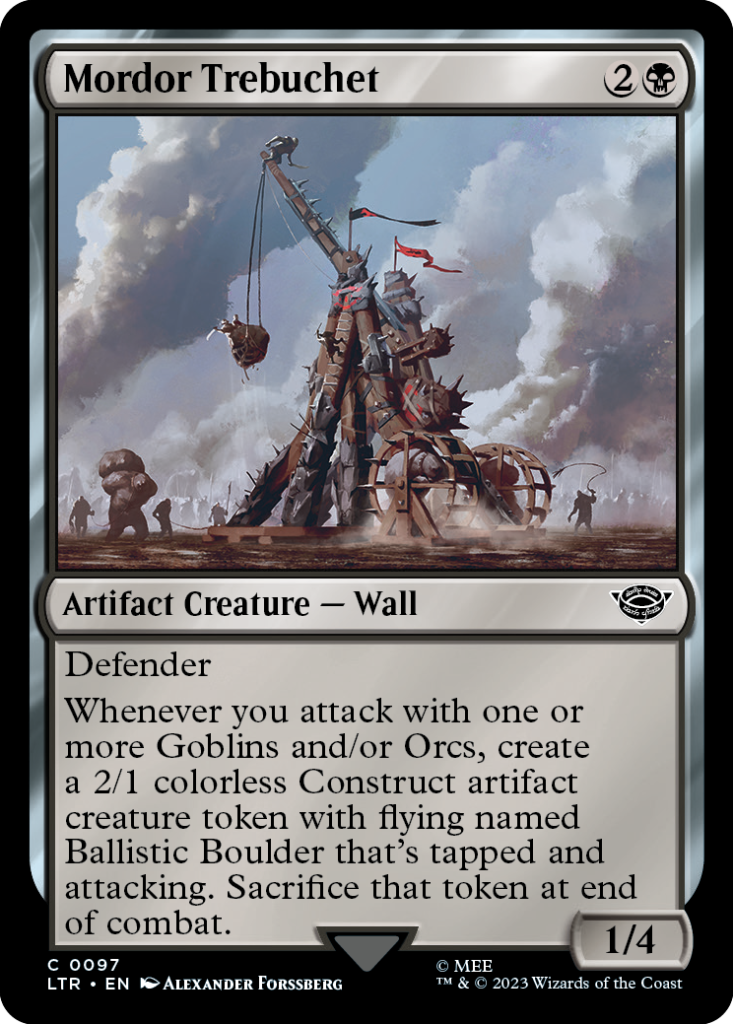
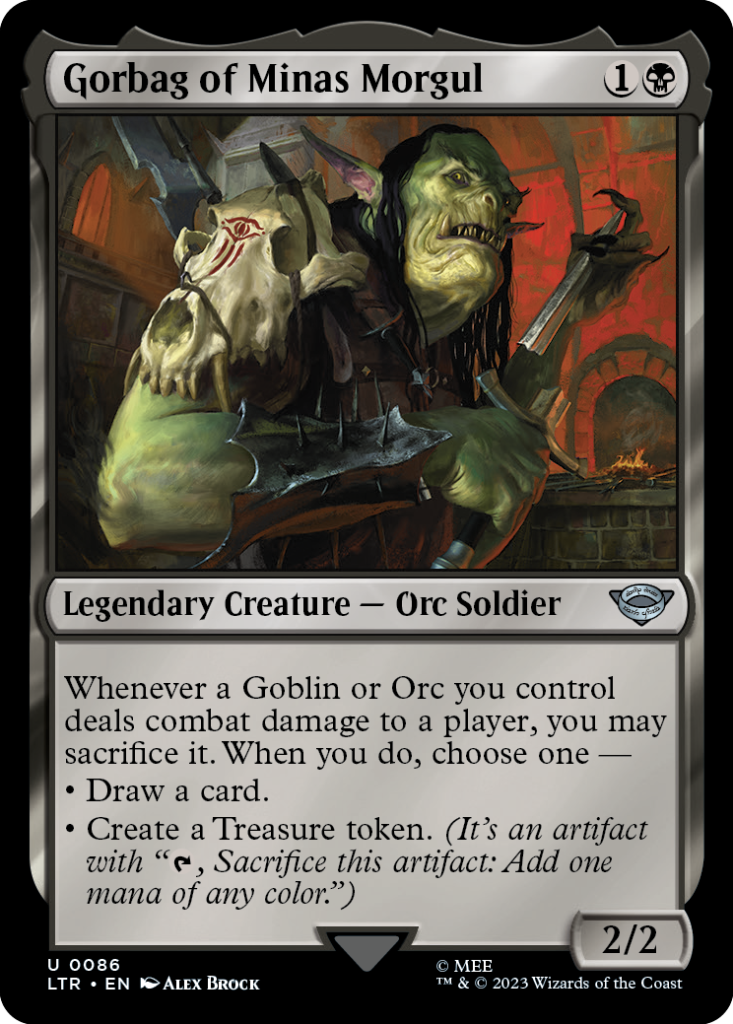
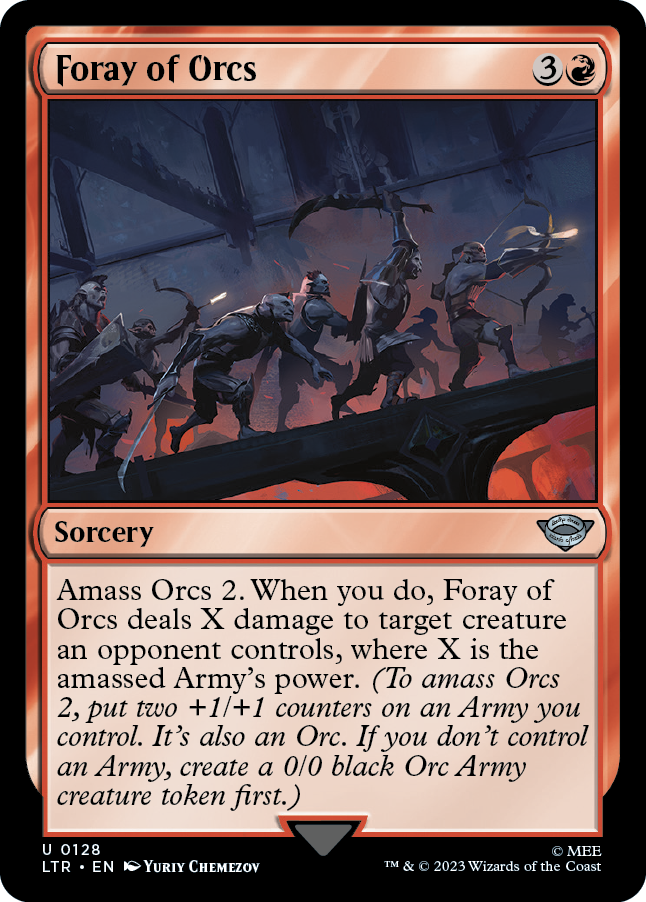
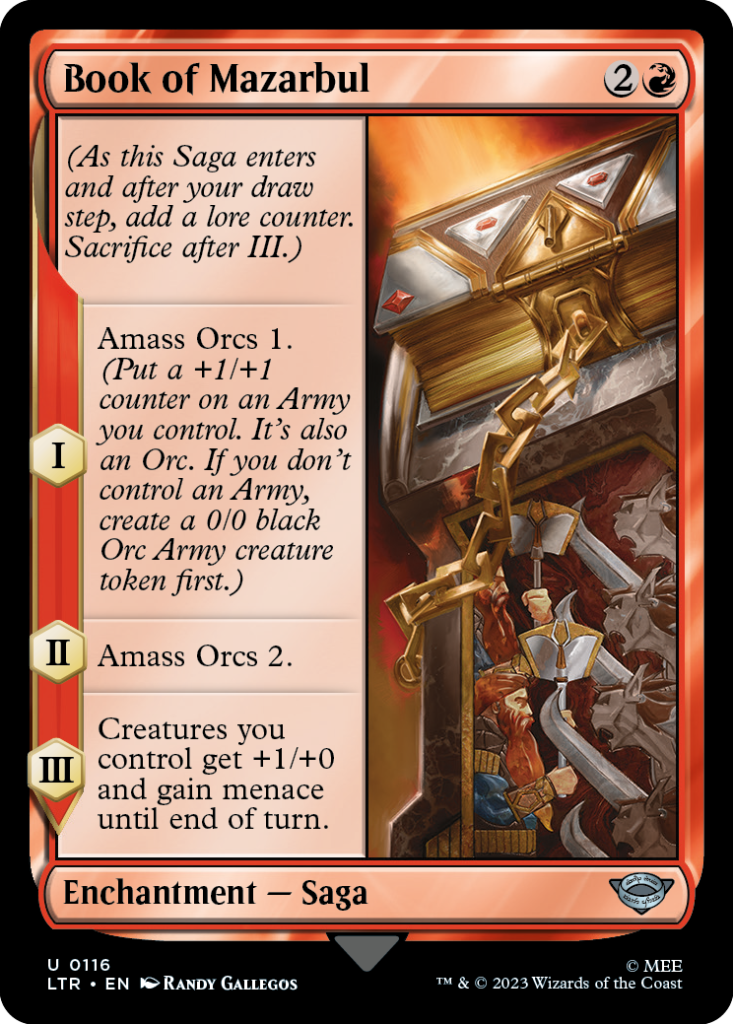
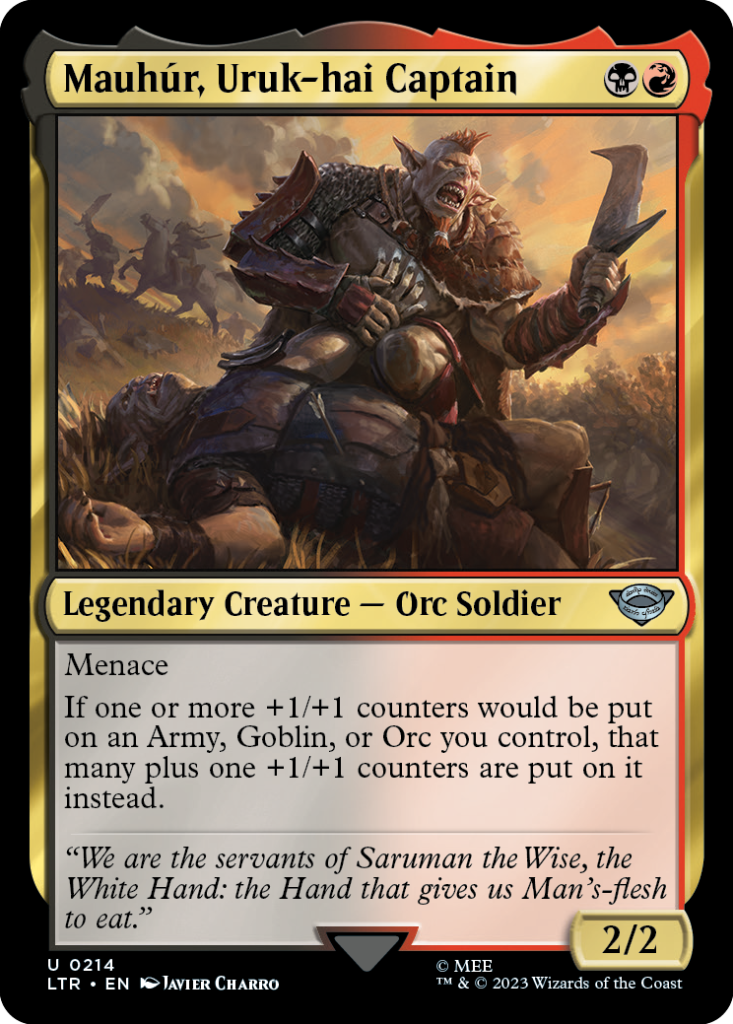
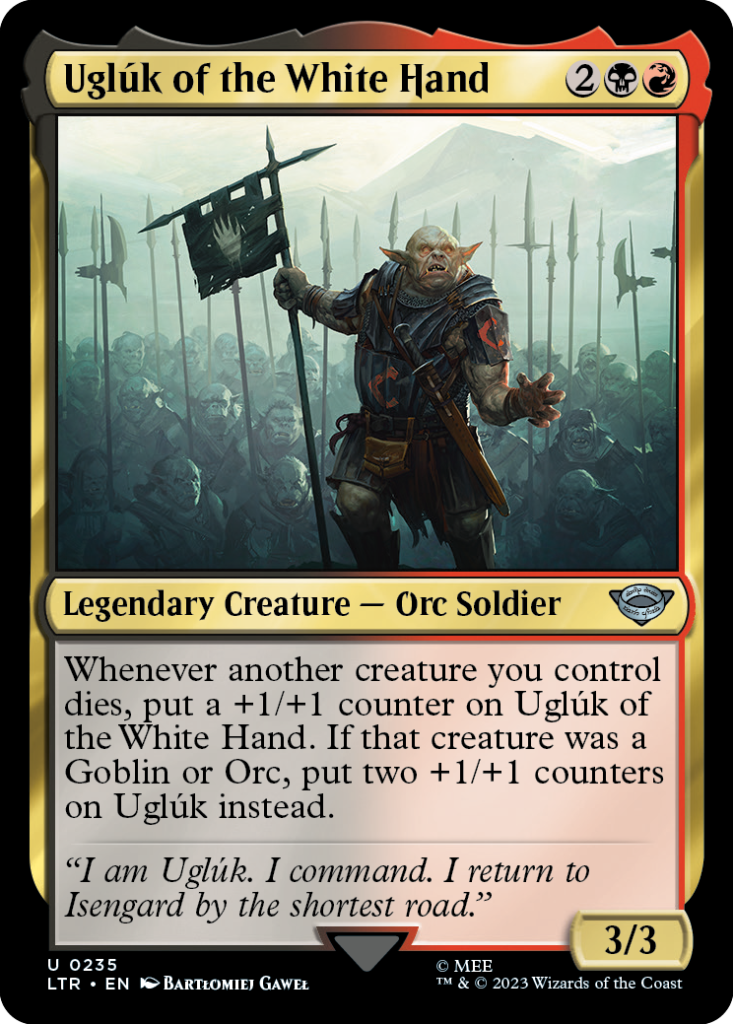
Rakdos is pretty standard Goblins and Orcs theme. There are some sacrifice synergies here as well, but you’re more aggressive than the Golgari deck. Besides the signpost multicolored uncommons, Foray of Orcs seems like the go-to pickup card for this deck. With no Amass in play four mana for a 2/2 that deals 2 damage when it enters the battlefield is a mini Flametongue Kavu, and it only gets better if you have even just a 1/1 army in play. Mordor Trebuchet also seems like it has a lot of high potential. There aren’t a ton of flying or reach creatures in this set, so a 1/4 defender that also gets in for 2 damage here and there can definitely put some strain on your opponent. I think this deck will have to have ways of dealing with your opponents’ ways of putting multiple foods in play, however.
Boros (RW) – Humans
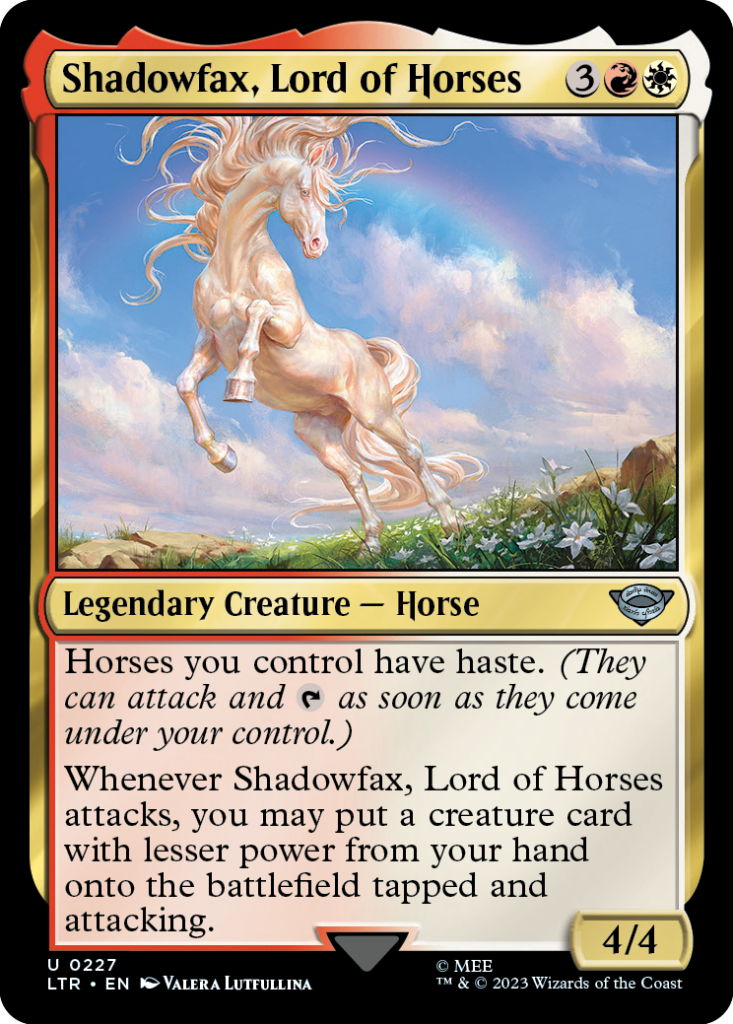
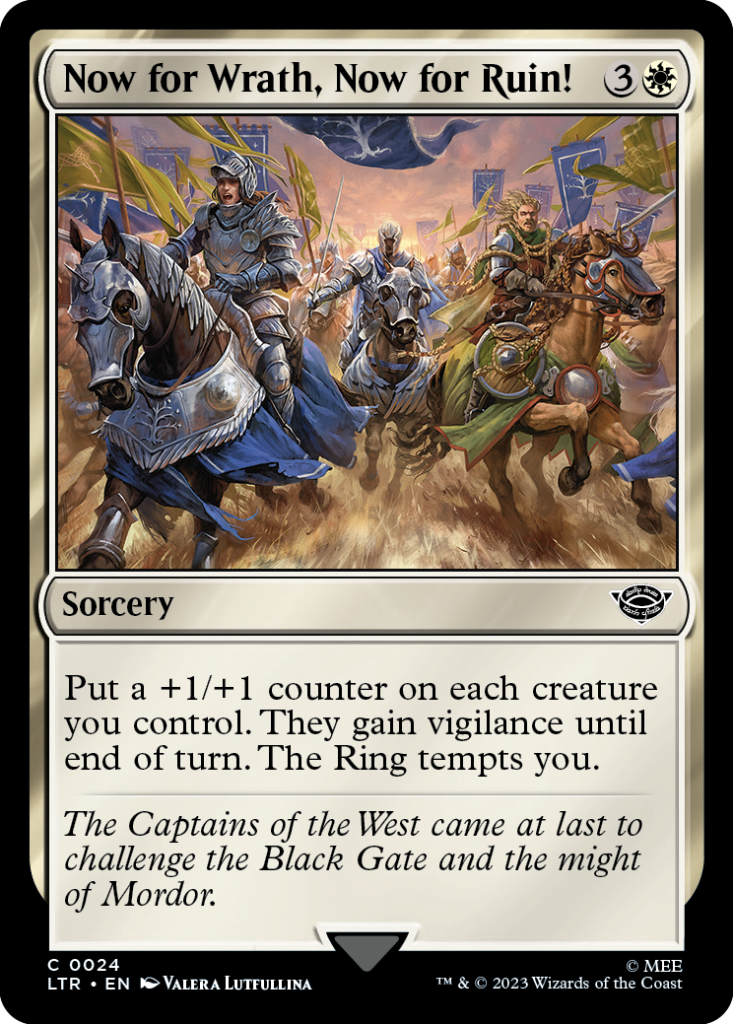
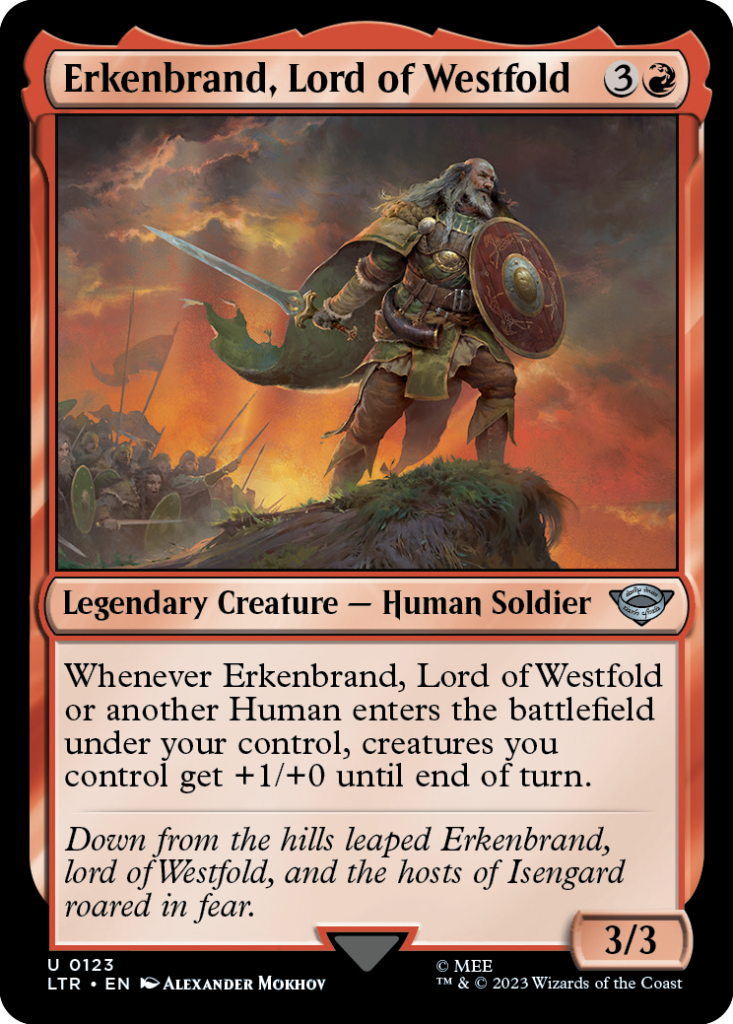
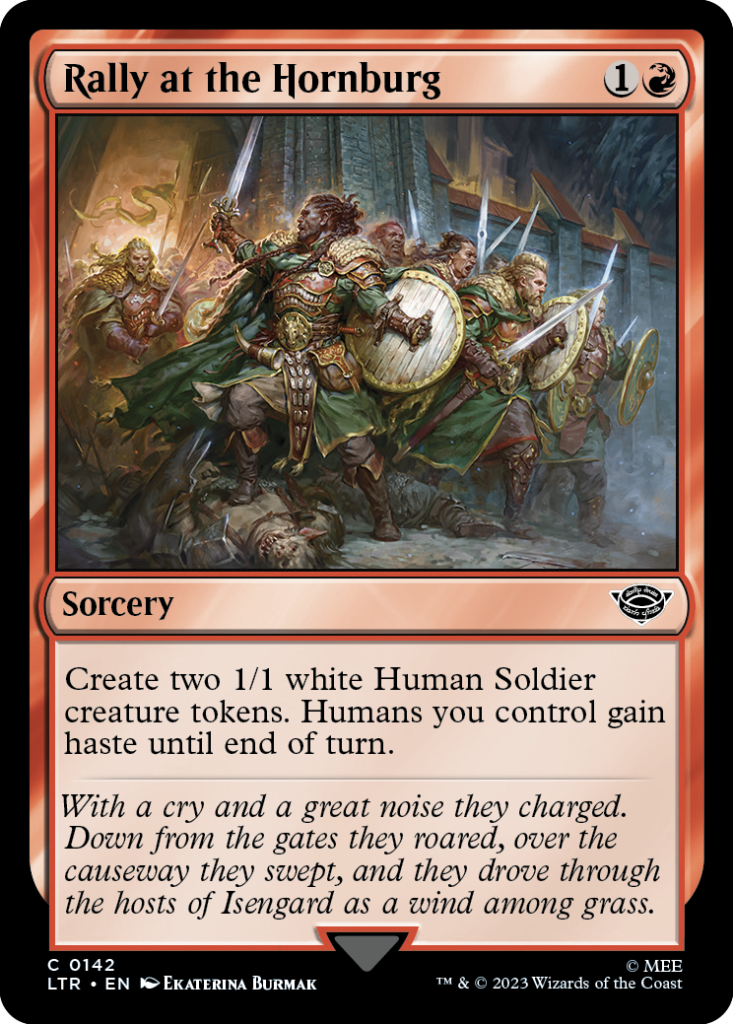
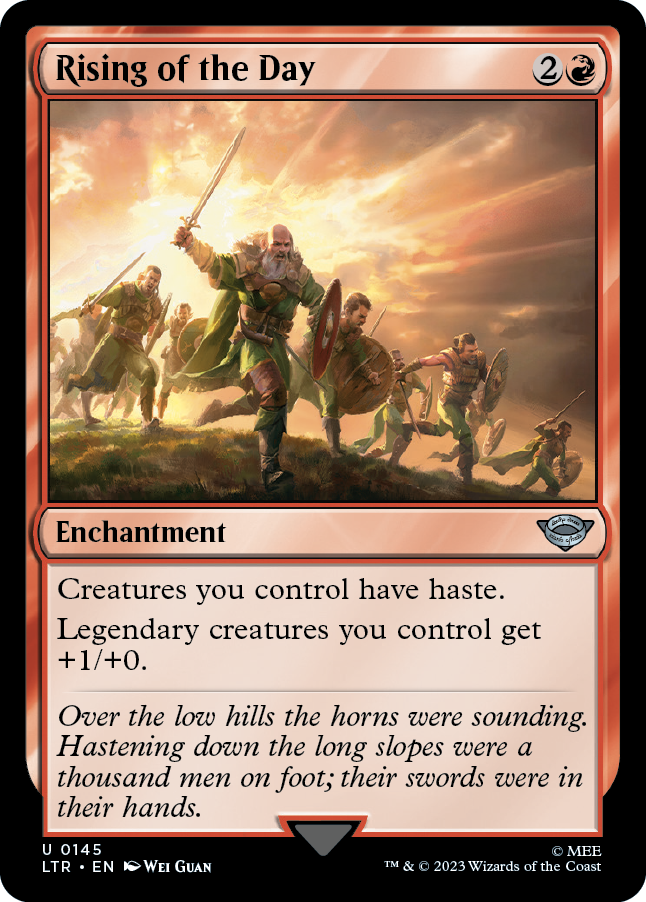
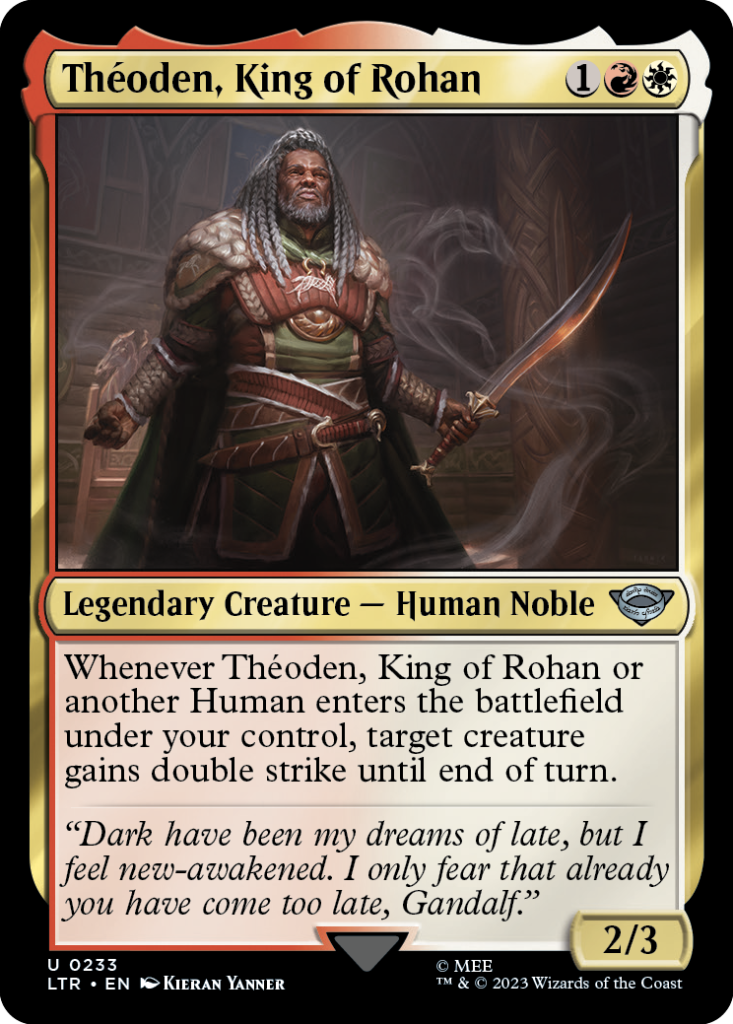
Forth Eorlingas! Boros revolves pretty heavily around a humans and haste theme. Erkenbrand is a great way to pump your team and go wide for a big hit, especially if you combo with Rally at the Hornburg. Theoden is the signpost uncommon of this archetype, making your attackers even more formidable. Your goal is not only to go wide, but to make your board formidable with lots of buff effects.
Izzet (UR) – Spells

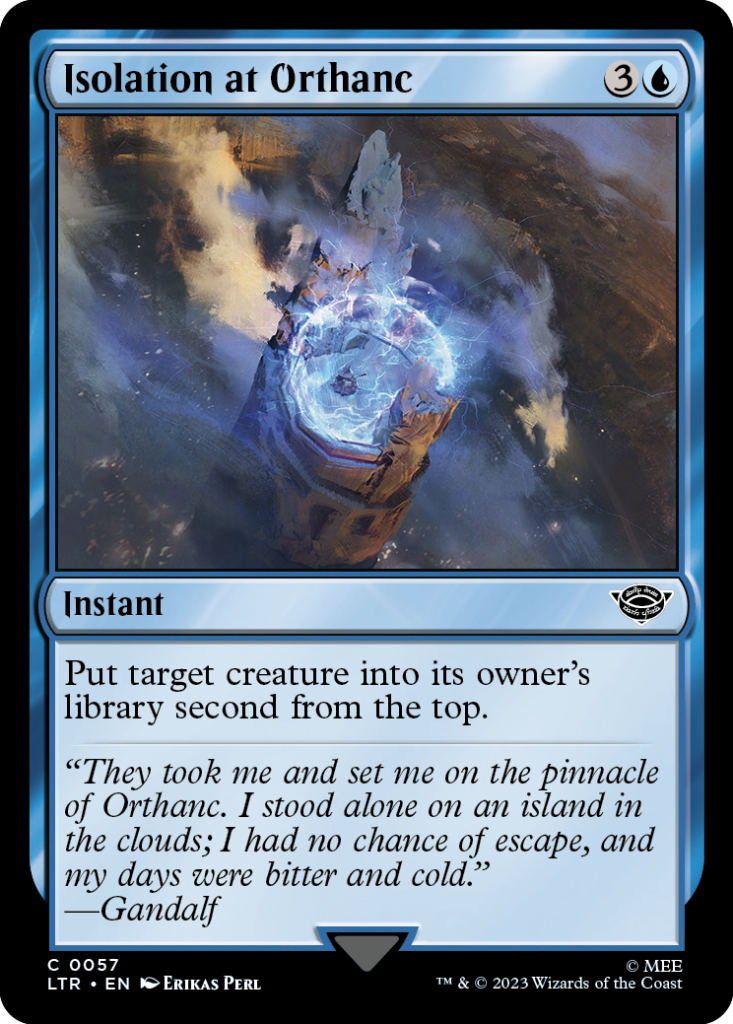

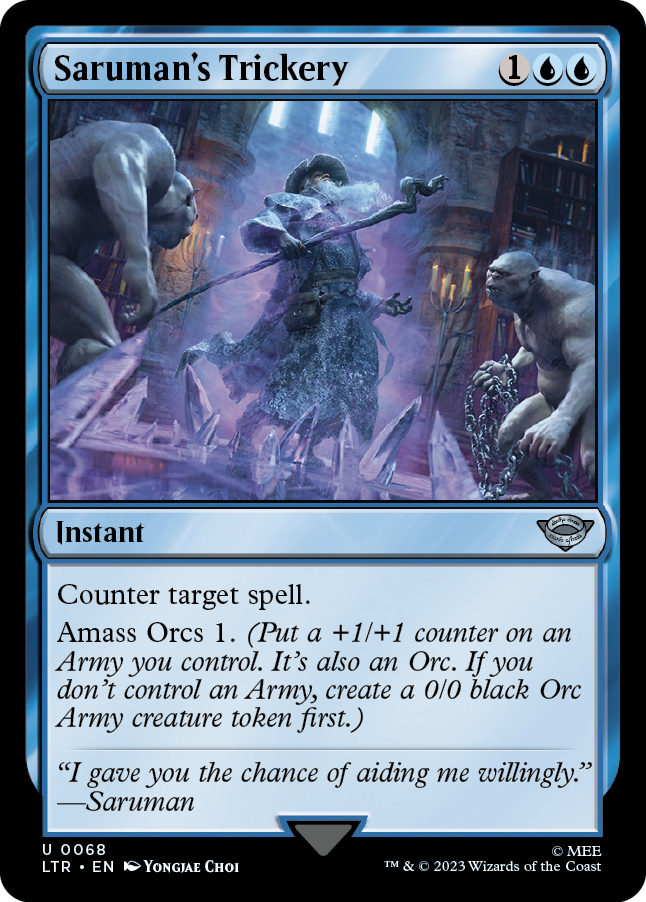
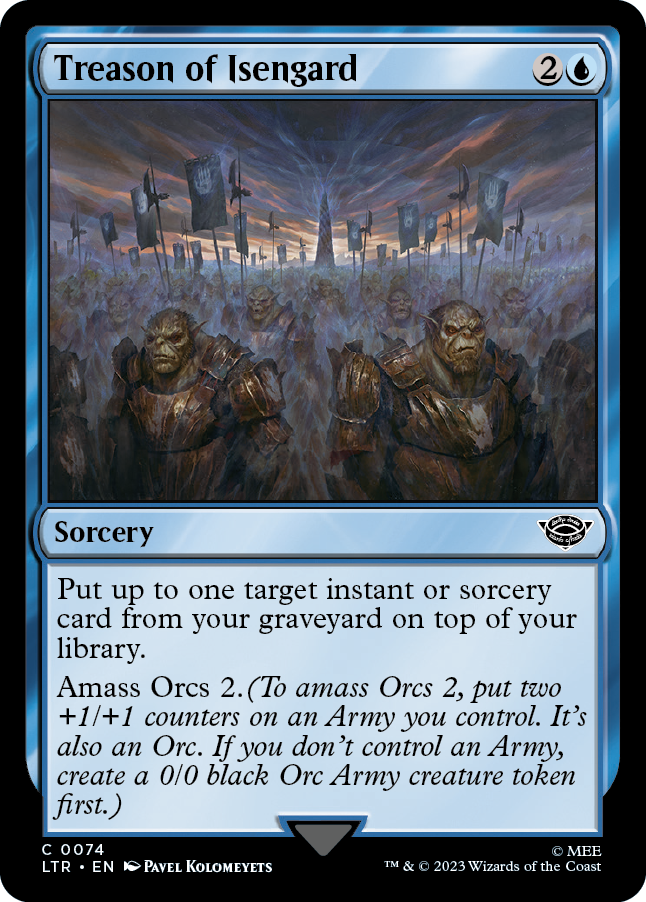

Izzet is another archetype I think has a lot of potential in this set. I love spell-based decks, and there are a tons of ways you can win with Izzet. Besides comboing with Surrounded by Orcs, which I explained earlier, you can also build a deck around Fiery Inscription. Pelagrir Survivor again is one of your important cards that brings the deck together. Because there are so many good aggressive decks in this format you want to be able to always have enough mana available so you can cast multiple spells in a turn. This deck definitely takes some setup, so it’s good to have cheap interaction to ensure you can go off on your big turns.
Mana Fixing
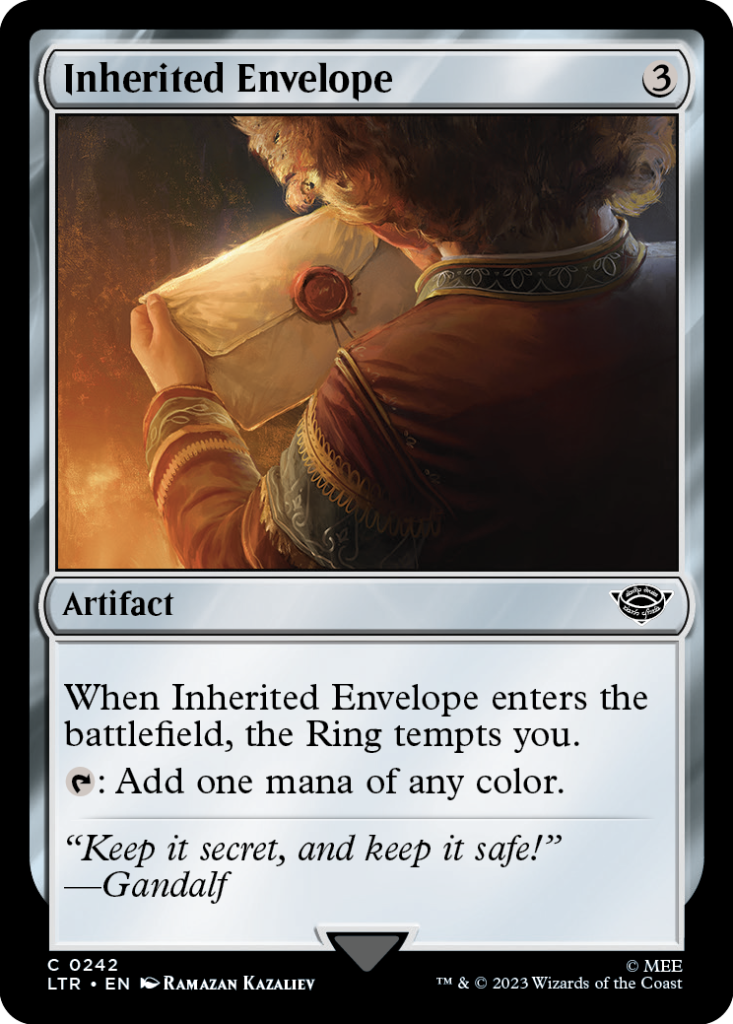
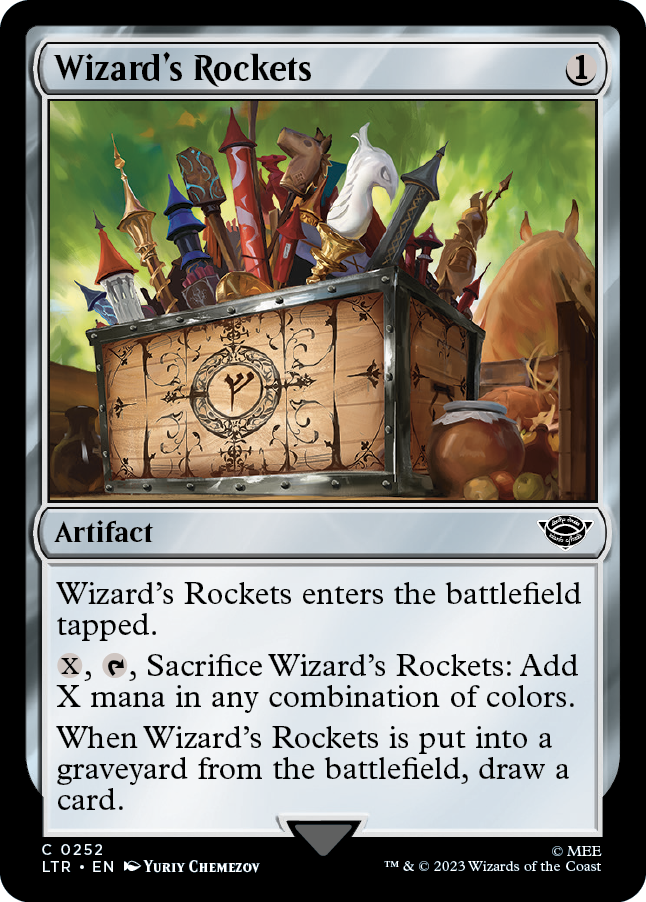
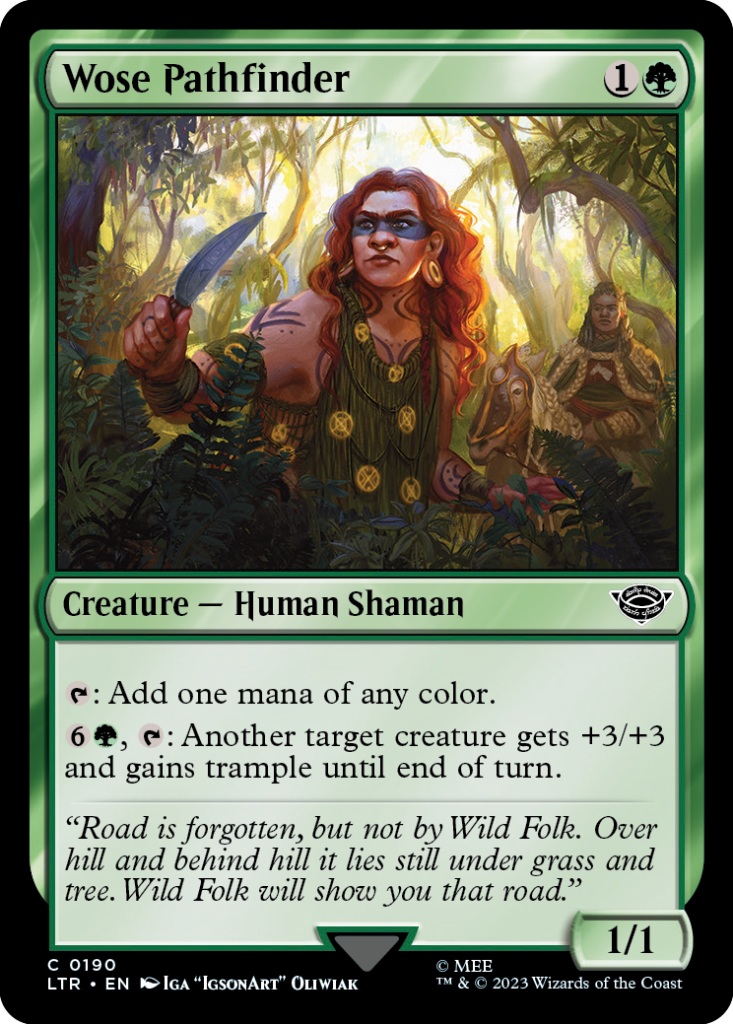
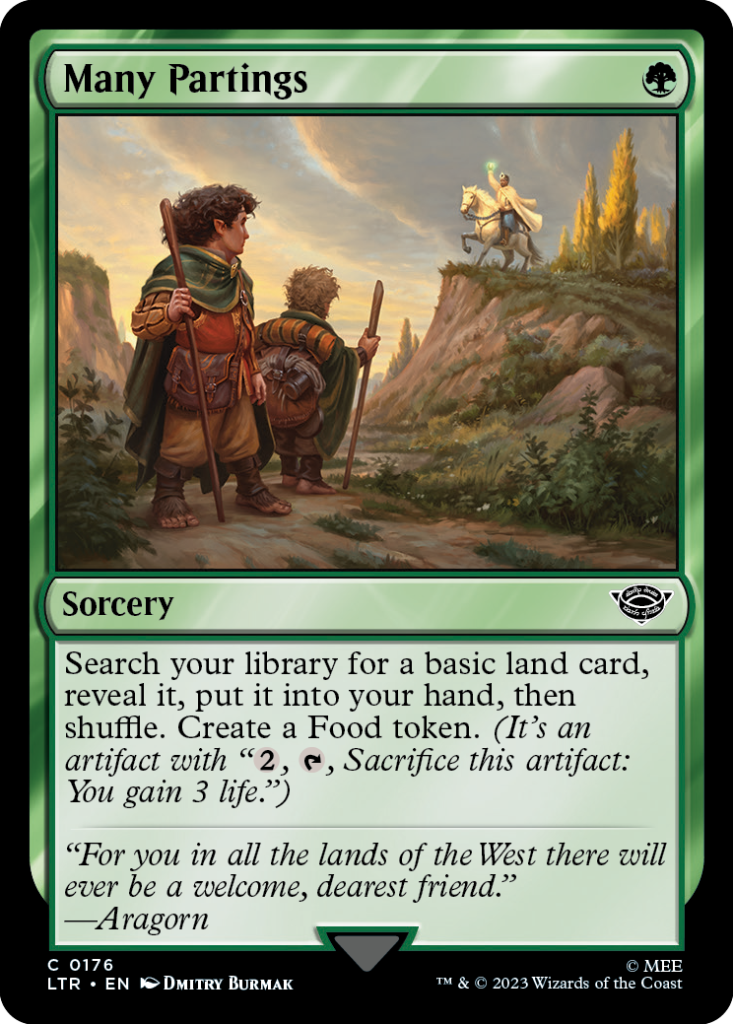
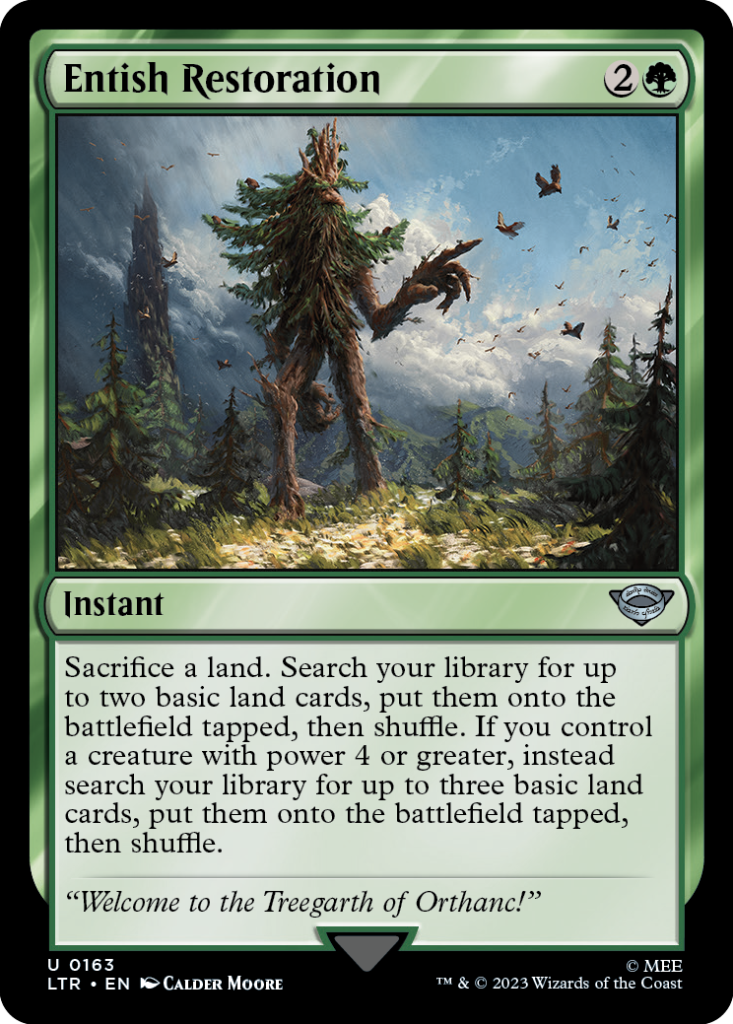
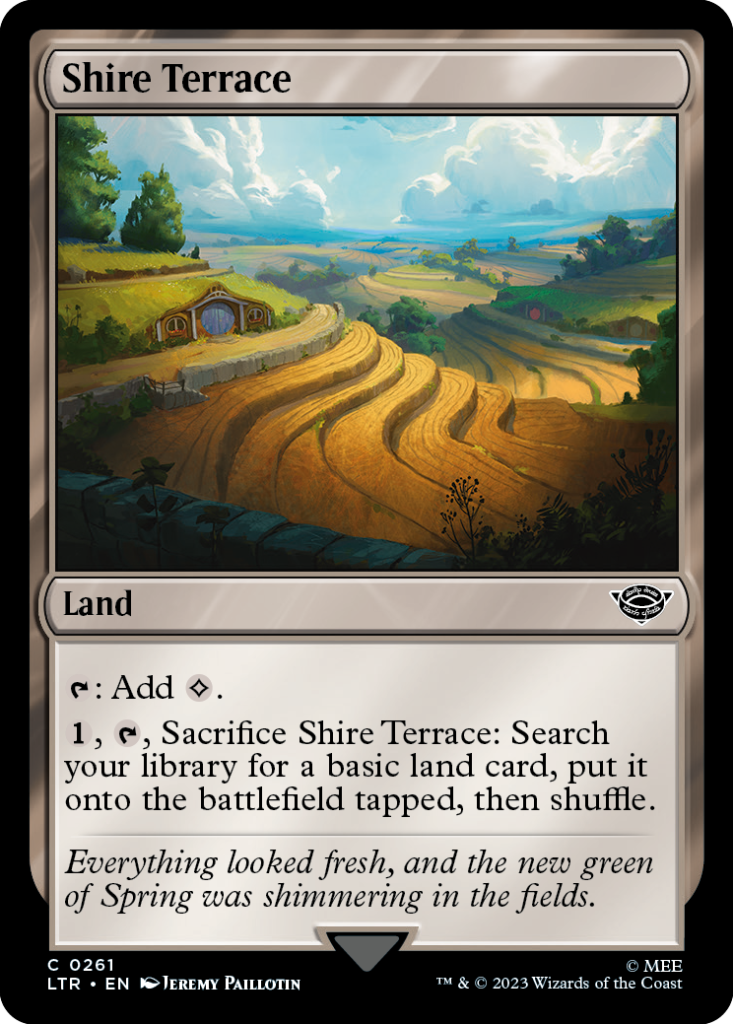
One important thing to note, especially for sealed, is what mana fixing is available in the format. It’s sometimes beneficial to be green-based in sealed so you can splash more of your powerful cards. It’s worth noting there aren’t any dual lands at common and uncommon in this set, so the majority of the time in limited you’ll be two-colors with maybe a minor splash. I think in sealed you can get a little more creative, especially if you’re base-green, just so you can play all of your powerful rares and removal spells. However, this set is much more two-color based than a set like March of the Machine.
Wrap-Up
Overall, Lord of the Rings: Tales of Middle Earth looks like a fantastic limited set. The overall flavor, art, and mechanics speak true to Lord of the Rings. I do think this set is a little narrow in terms of design – it’s definitely not as deep as March of the Machine. However, I do think this makes drafting and Sealed a little more straightforward – you want to find a lane and maximize your synergies. I’m honestly also happy this set has no double-faced cards or any particularly troublesome mechanics.
Prerelease is above all about having fun and making new friends. This weekend I’ll be traveling to Command Fest Anaheim as a guest, and I’m so excited to play Lord of the Rings and meet new people. Have fun, crack some packs, and don’t forget to eat a second breakfast.
Thanks for reading!
